Introduction
Bhimrao Ramji Ambedkar, affectionately known as “Babasaheb” (“Respected Father”) led an extraordinary life. Born in 1891 in India to a poor family belonging to a Dalit community (referred to at that time as “Untouchables”; considered to be the lowest of the social hierarchy and outside of the Hindu caste system), he faced extreme discrimination and segregation throughout his life. He went on to gain two doctorates from LSE and Columbia University, and was also called to the bar at Gray’s Inn. A brilliant scholar of social justice, Ambedkar fought for the representation and rights of Dalit communities and was involved in the Independence movement in India; he was Chair of the Drafting Committee for the Indian constitution.
This online living exhibition is a collaborative space between the LSE South Asia Centre, LSE Library and DecolonisingLSE Collective. It begins by showcasing for the first time the entirety of Ambedkar’s LSE student file – a record of Ambedkar’s interactions with LSE – and will serve as a place to document and bring together activity at LSE inspired by the life and legacy of Ambedkar. Over time we will add recordings to events, reading lists, podcasts, and other material, and invite contributions from the LSE community on what Ambedkar means to us.
Many thanks to Dr Nilanjan Sarkar (LSE South Asia Centre), Dr Jayaraj Sundaresan (LSE Geography), Andy Jack (LSE Library Web Editor), and Sue Donnelly (retired School archivist) for their assistance, expertise and kindness in making this space possible.
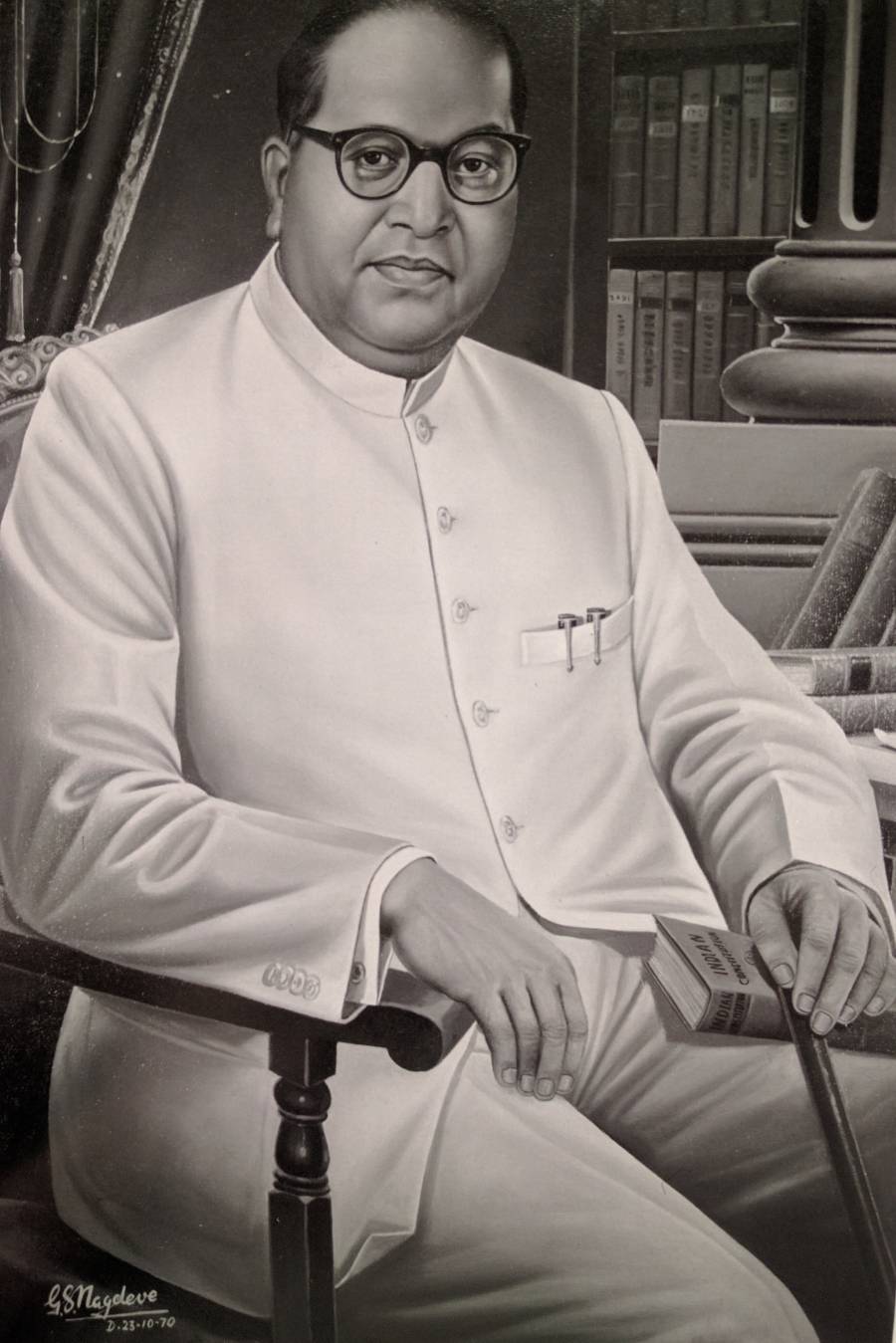
Portrait of Ambedkar by G. S. Nagdeve, gifted to LSE by the Dr Ambedkar Memorial Committee, 25 September 1973, LSE student file
Ambedkar at LSE
Ambedkar first came to LSE in 1916 when he was 25 years old. He already had a degree in Economics and Political Sciences from the University of Bombay and had been the first Dalit to study at Elphinstone High School in Bombay (now Mumbai). Facing discrimination as an “Untouchable” throughout his childhood, he nevertheless won a scholarship from the Baroda State (now Vadodara) enabling him to continue his studies abroad in return for service to the state. The scholarship took him to Columbia University where he received his first doctorate before heading to London.
The First World War was not yet over….on his arrival [in London] Ambedkar’s person, clothes, books and luggage were minutely searched by the British secret police officers, thinking that he also belonged to the Indian Revolutionary Party.
Keer biography, p31
Soon after arriving in London Ambedkar registered for a Master’s degree at LSE, also enrolling for the Bar-at-Law degree at Gray’s Inn at the same time.
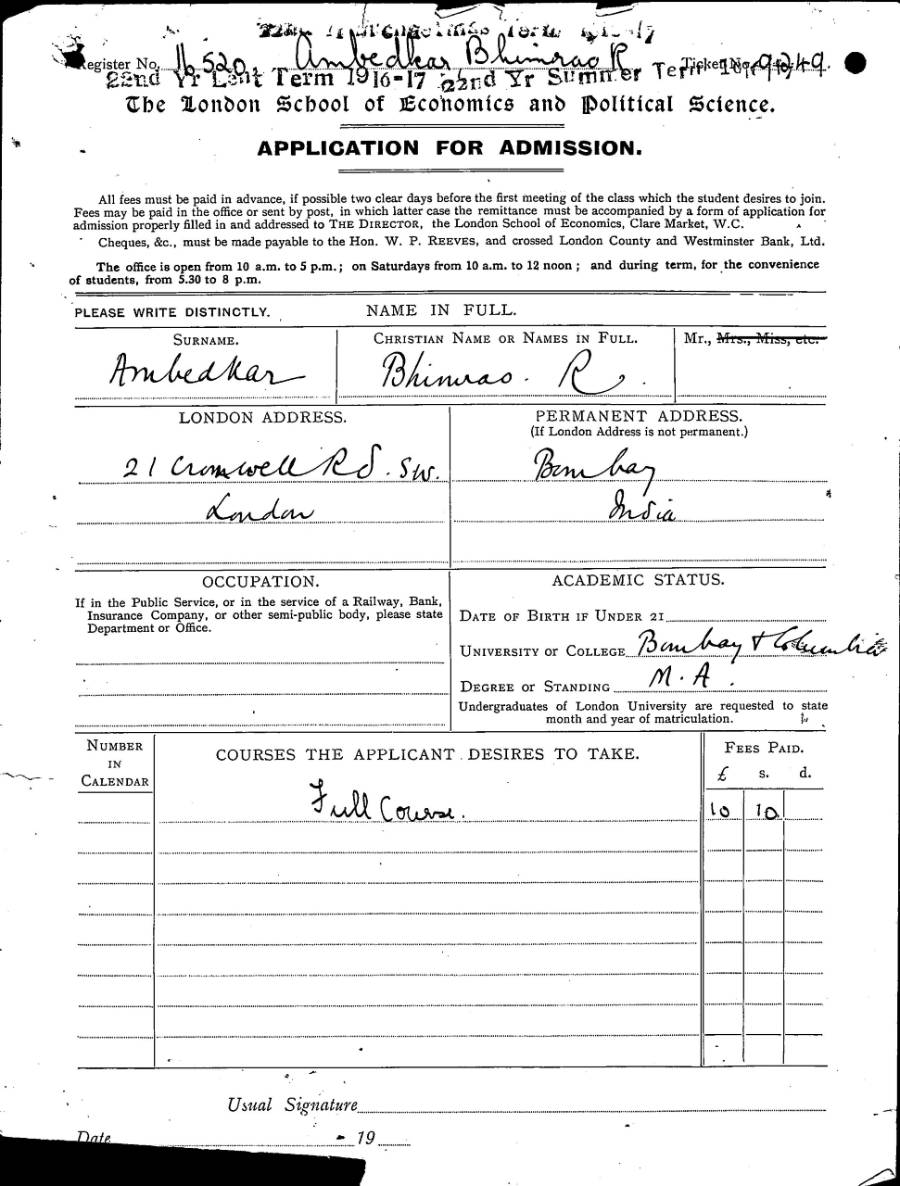
Ambedkar’s application form to study for a Master’s degree at LSE, 1916, LSE student file
His LSE application form shows the course cost £10 and 10 shillings and that he was initially living at 21 Cromwell Road in London, a house rented by the India Office to help Indian students when they first arrived in the country. He took courses in Geography, Political Ideas, Social Evolution, and Social Theory. An administration form marks his attendance and absences at these courses:
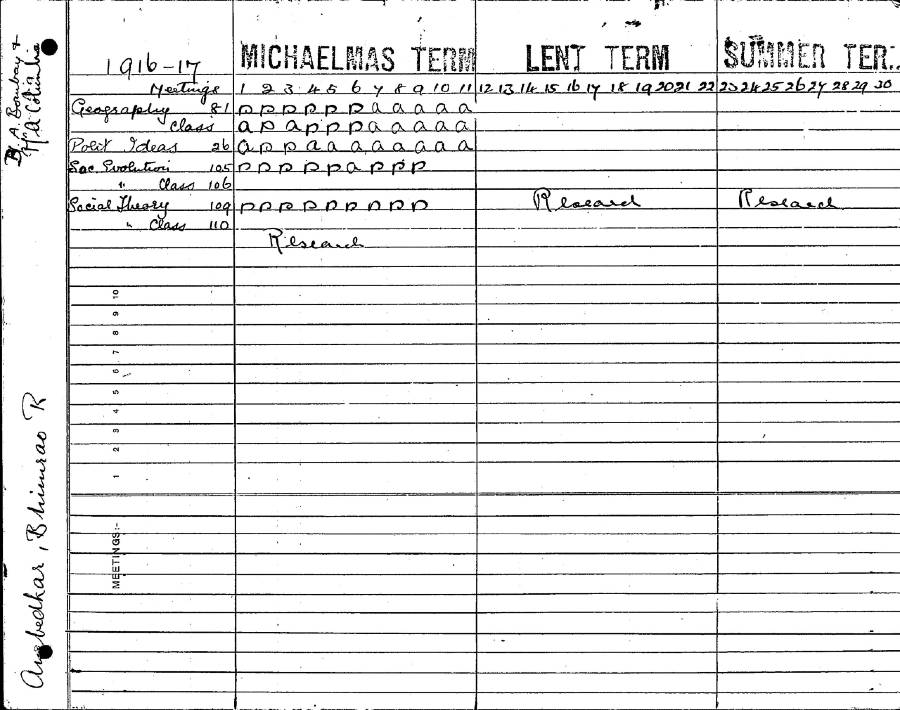
Ambedkar’s attendance record at LSE, 1916, LSE student file
His teachers included Professor Leonard Hobhouse, and Sir Halford Mackinder (former LSE Director and Professor of Geography). There were many highly influential teachers at LSE around this time, including Harold Laski, who taught many generations of Indian students and had a long term impact in support for socialism in India and other countries.
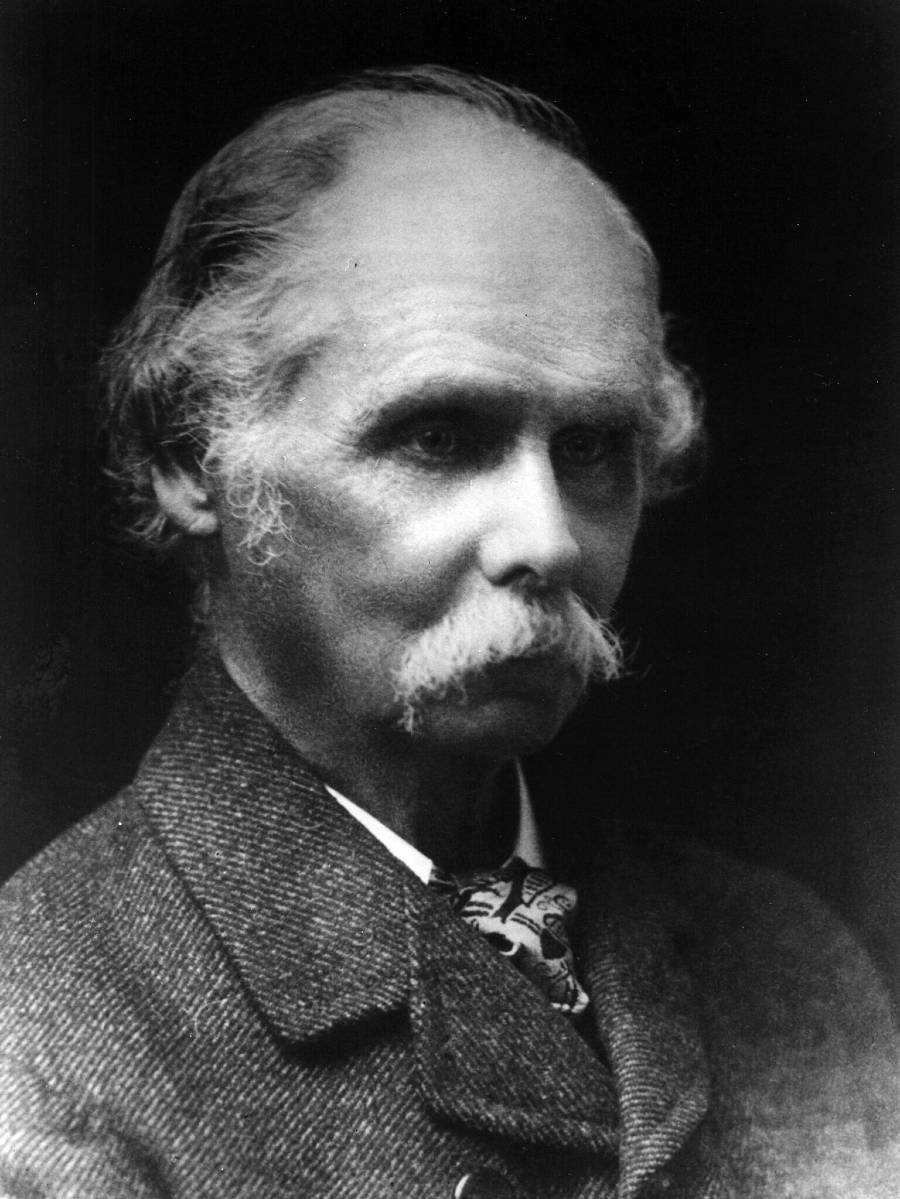 Professor Leonard Trelawny Hobhouse
Professor Leonard Trelawny Hobhouse
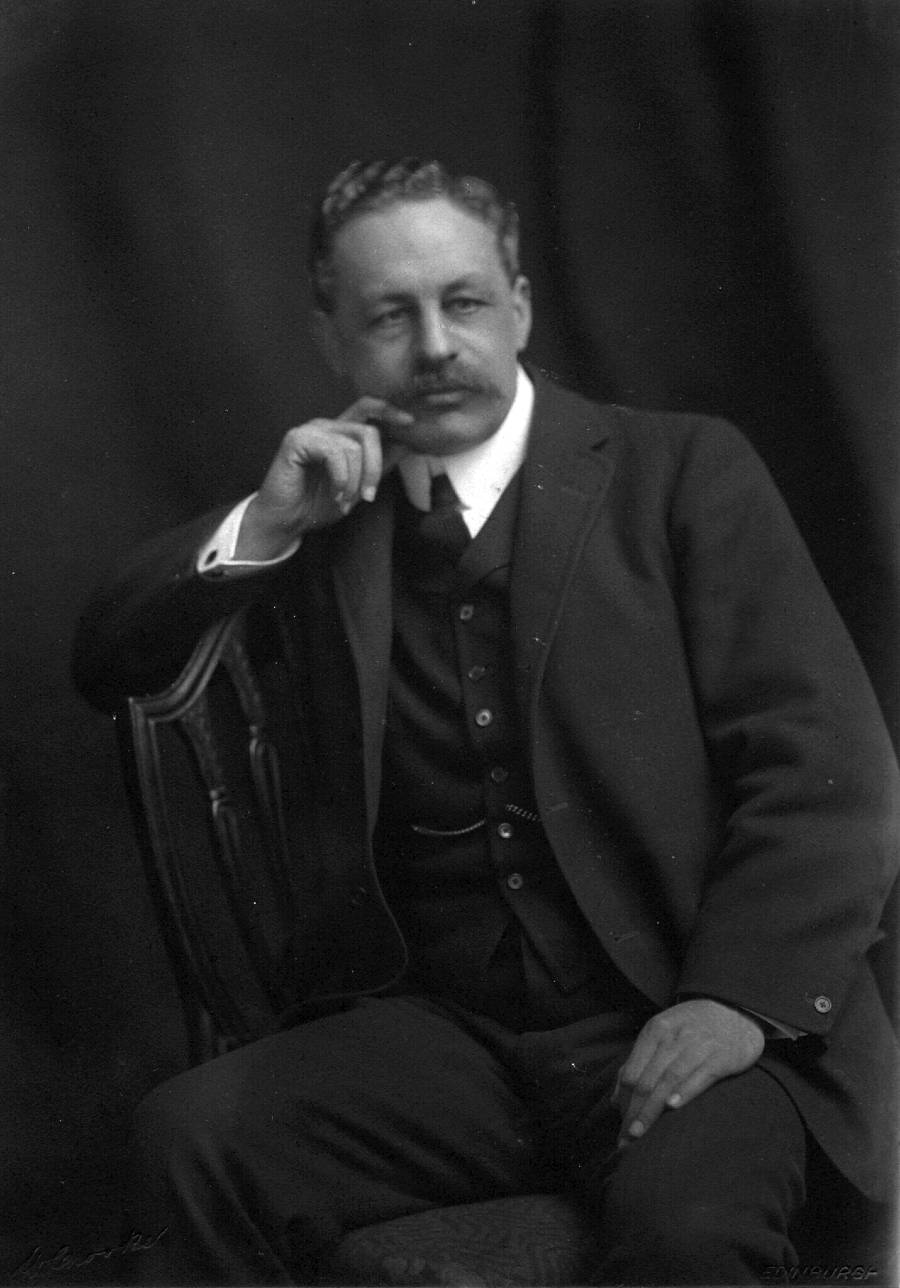 Sir Halford Mackinder
Sir Halford Mackinder
LSE had been founded by members of the Fabian Society for the “…study and investigation of the concrete facts of industrial life and the actual working of economic and political relations as they exist or have existed, in the United Kingdom and in foreign countries.” (LSE Prospectus, 1895). Ambedkar joined a vibrant student community with a large international population that was only 21 years old at the time. Although there are no photographs of his time here in the LSE archives, there is a School photograph of students from just a few years later.
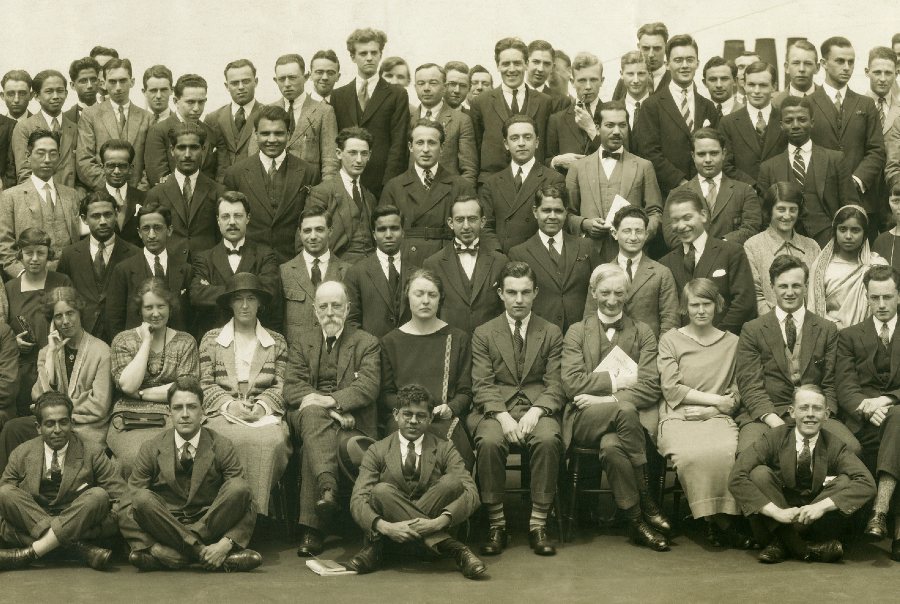 School Photograph, June 1924
School Photograph, June 1924
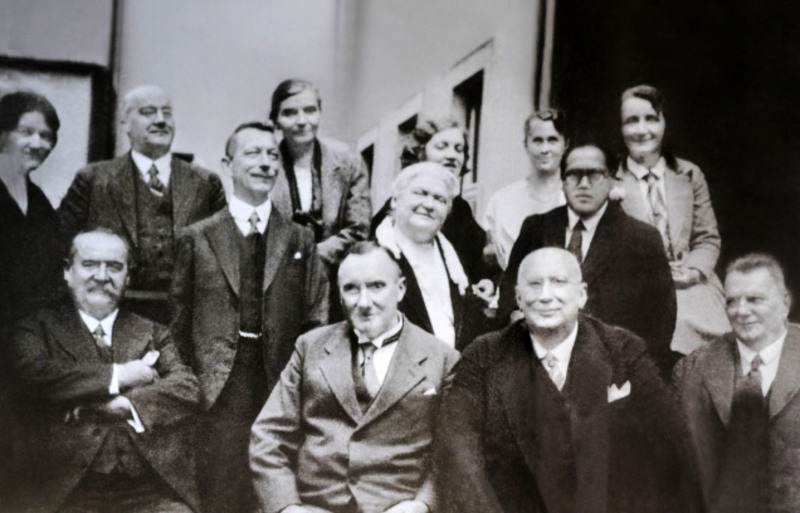
This image shows Ambedkar at LSE, pictured middle row far right, although we are unable to find the source. Are you the owners of the image? Please get in touch
At the same time as enrolling at LSE, Ambedkar also enrolled at Gray’s Inn (Mithan Tata, a prominent social activist and the first Indian woman lawyer, would also enroll for simultaneous degrees at LSE and Lincoln's Inn just a few years after Ambedkar). This small timeline shows just a few of the prominent LSE alumni and other connections between LSE and the Indian subcontinent.
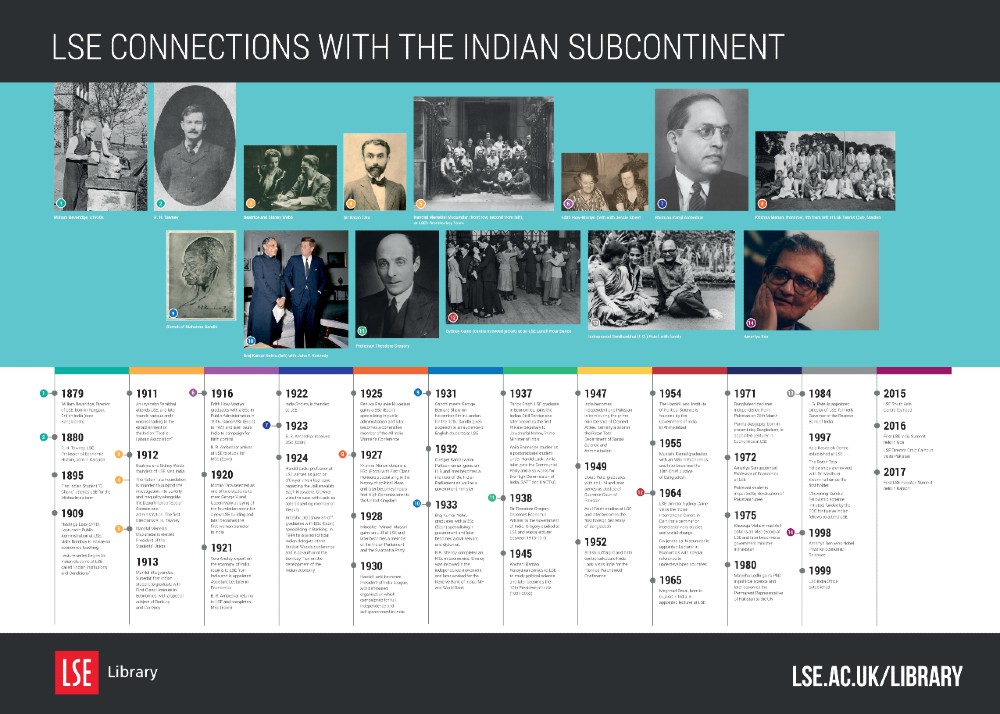 Download PDF of timeline (somebody missing? Let us know)
Download PDF of timeline (somebody missing? Let us know)
Ambedkar’s studies at LSE were interrupted (although later in life he would eventually publish the thesis he was working on as The Evolution of Provincial Finance in British India). The terms of his scholarship had ended meaning he was bound to return to India and to serve the Baroda State.
His return trip, made during the height of the First World War, was a dangerous one. Sending his luggage, personal library, and academic work in a separate boat, Ambedkar took a train to Marseille and then boarded the s.s. Kaiser-i Hind. Whilst Ambedkar made it home safely to the relief of his family, the ship carrying his personal belongings was torpedoed and sunk by a German submarine, losing Ambedkar’s luggage forever.
My five years of staying in Europe and America had completely wiped out of my mind any consciousness that I was an untouchable, and that an untouchable wherever he went in India was a problem to himself and to others. But when I came out of the station, my mind was considerably disturbed by a question, "Where to go? Who will take me?" I felt deeply agitated. Hindu hotels, called Vishis, I knew there were. They would not take me. The only way of seeking accommodation therein was by impersonation. But I was not prepared for it, because I could well anticipate the dire consequences which were sure to follow if my identity was discovered — as it was sure to be.”
Ambedkar writing in Waiting for a Visa, transcribed by Columbia University, read text in full
Working as a military secretary to the Maharaja of Baroda, Ambedkar was subject to extreme discrimination and segregation as an “untouchable”. Eventually becoming Professor at Sydenham College, he saved enough money to return to his studies in London, along with some financial help from the Maharaja of Kolhapur. He wrote to his previous supervisors at Columbia University asking for a reference to help him gain admission back at LSE.
…..he is not only very able, but an exceedingly pleasant fellow
Professor Herbert Foxwell, about Ambedkar
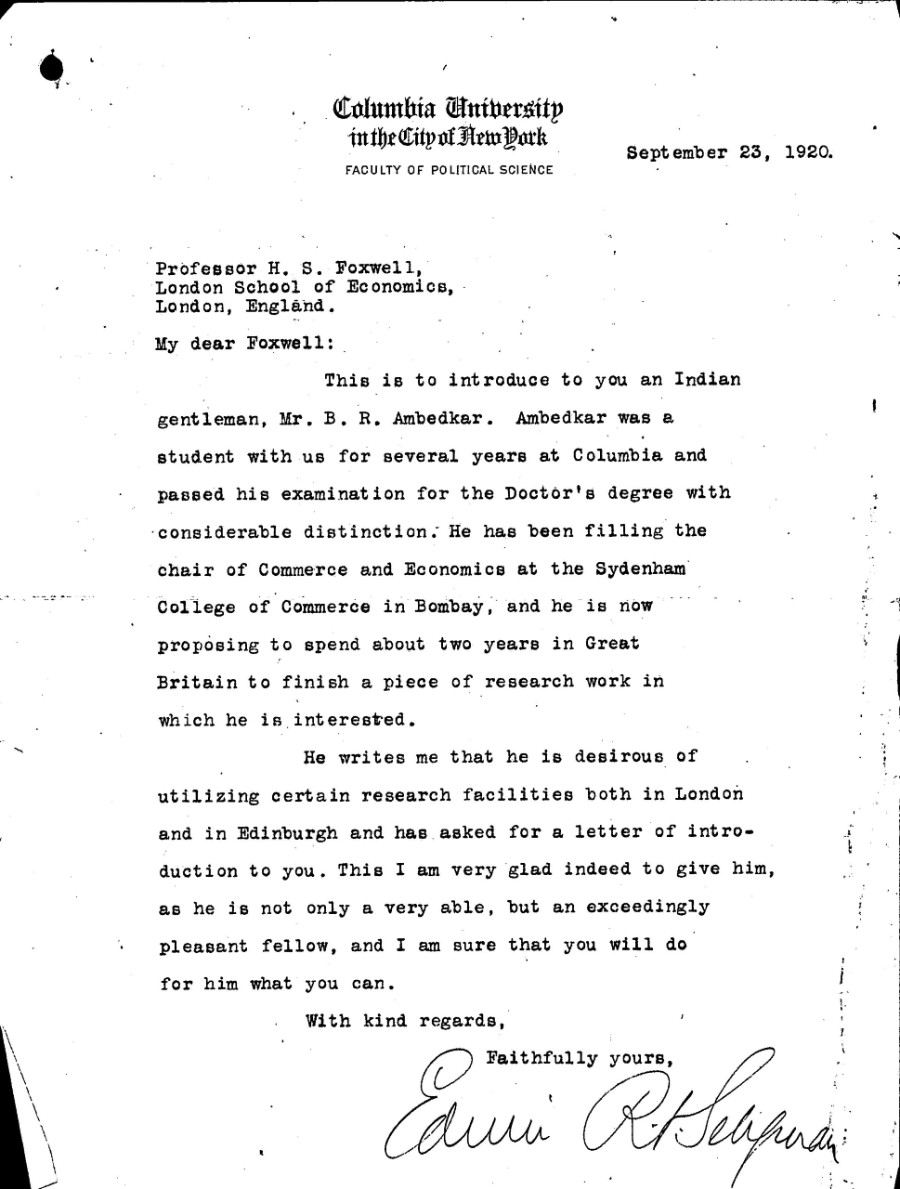 Reference about Ambedkar to Professor Herbert Foxwell at LSE, 1920, LSE student file
Reference about Ambedkar to Professor Herbert Foxwell at LSE, 1920, LSE student file
Responding to this letter from Columbia University recommending Ambedkar, LSE Professor Herbert Foxwell replies that there are “no more worlds for him to conquer”, referring to Ambedkar having already completed a doctorate.
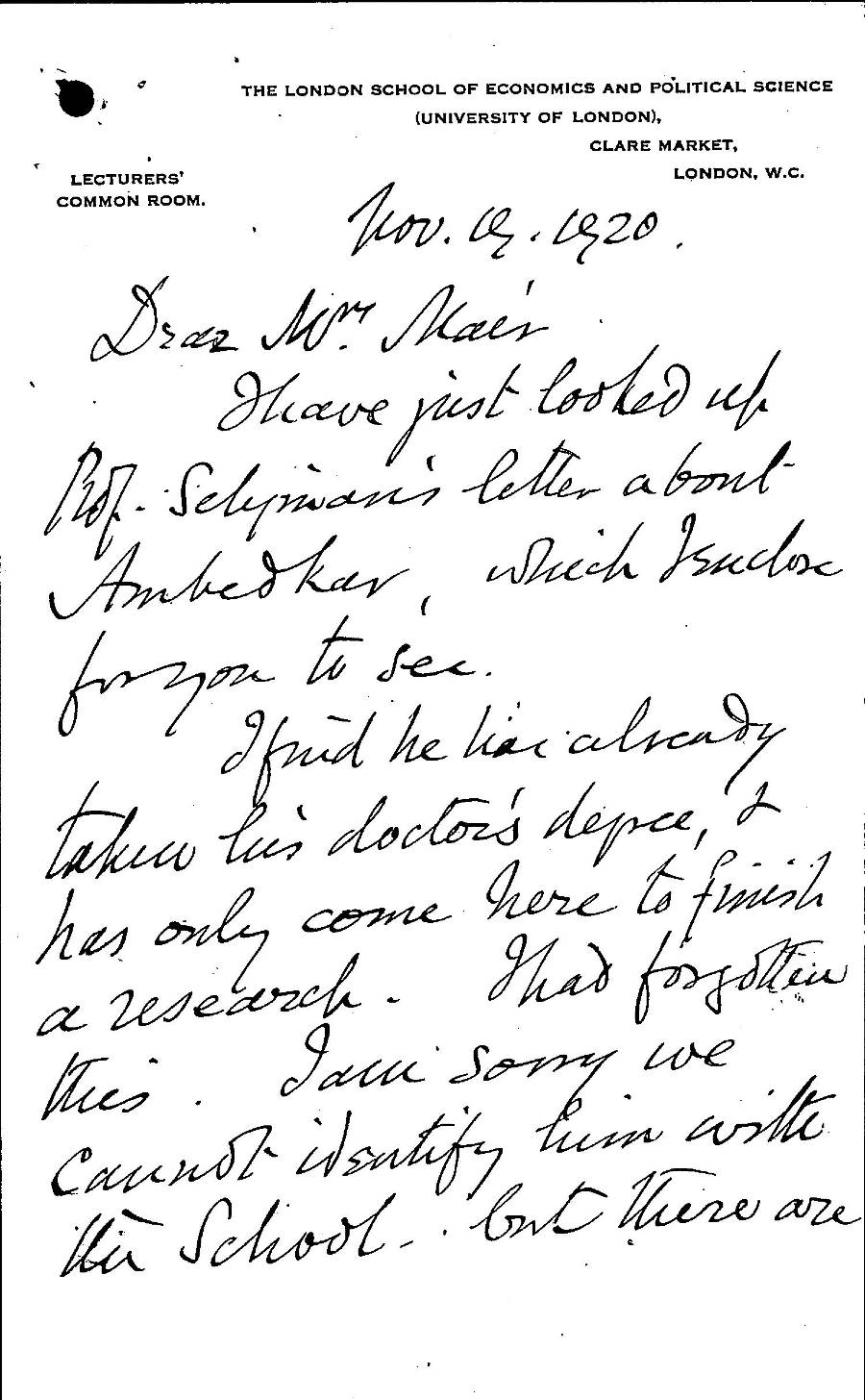
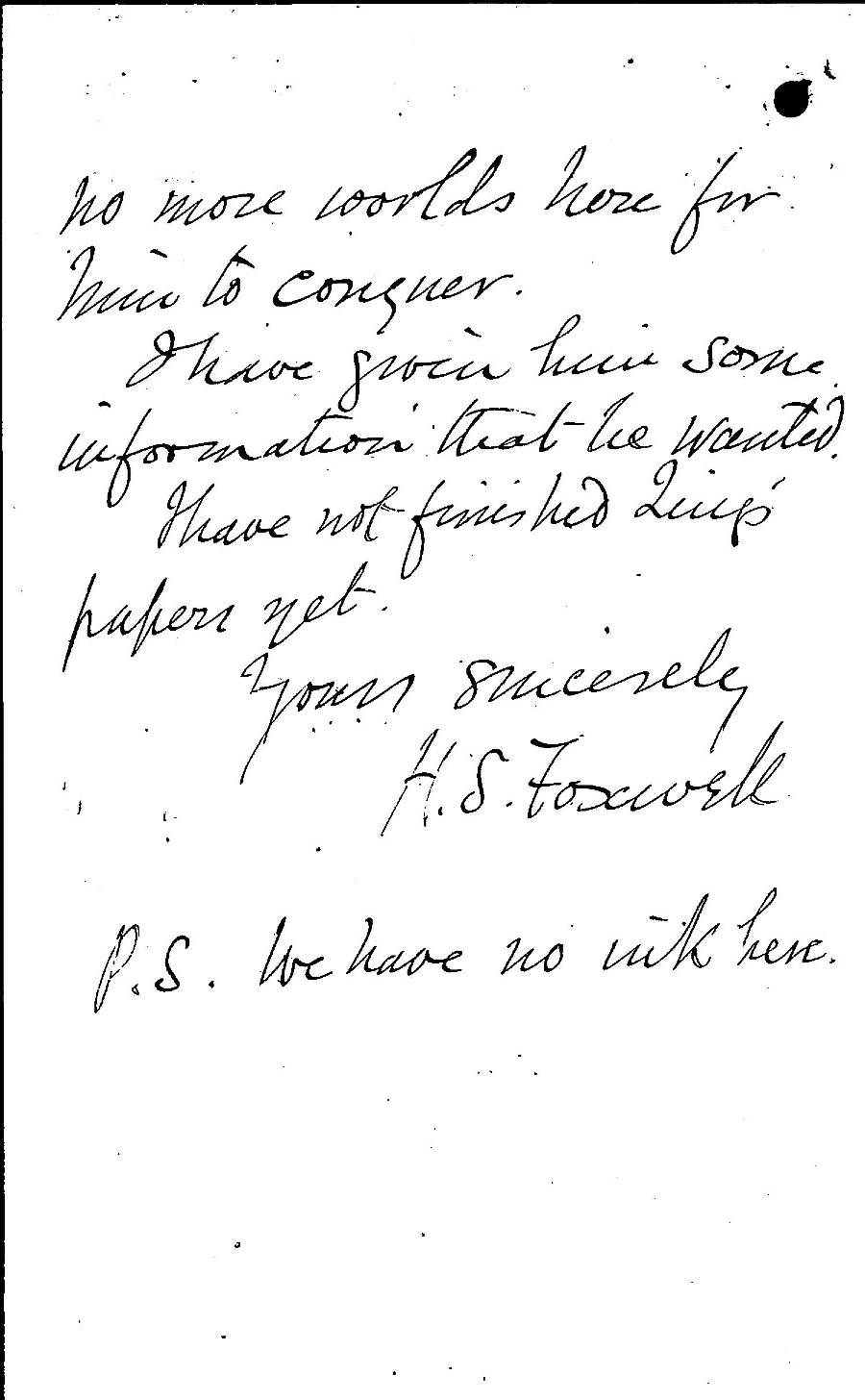
Reply from Professor Herbert Foxwell, 1920, LSE student file
Nevertheless, Ambedkar was admitted and returned to his studies at LSE for a second time. This time he is living at the second of three addresses he lived at while at LSE, 95 Brook Green, Hammersmith.
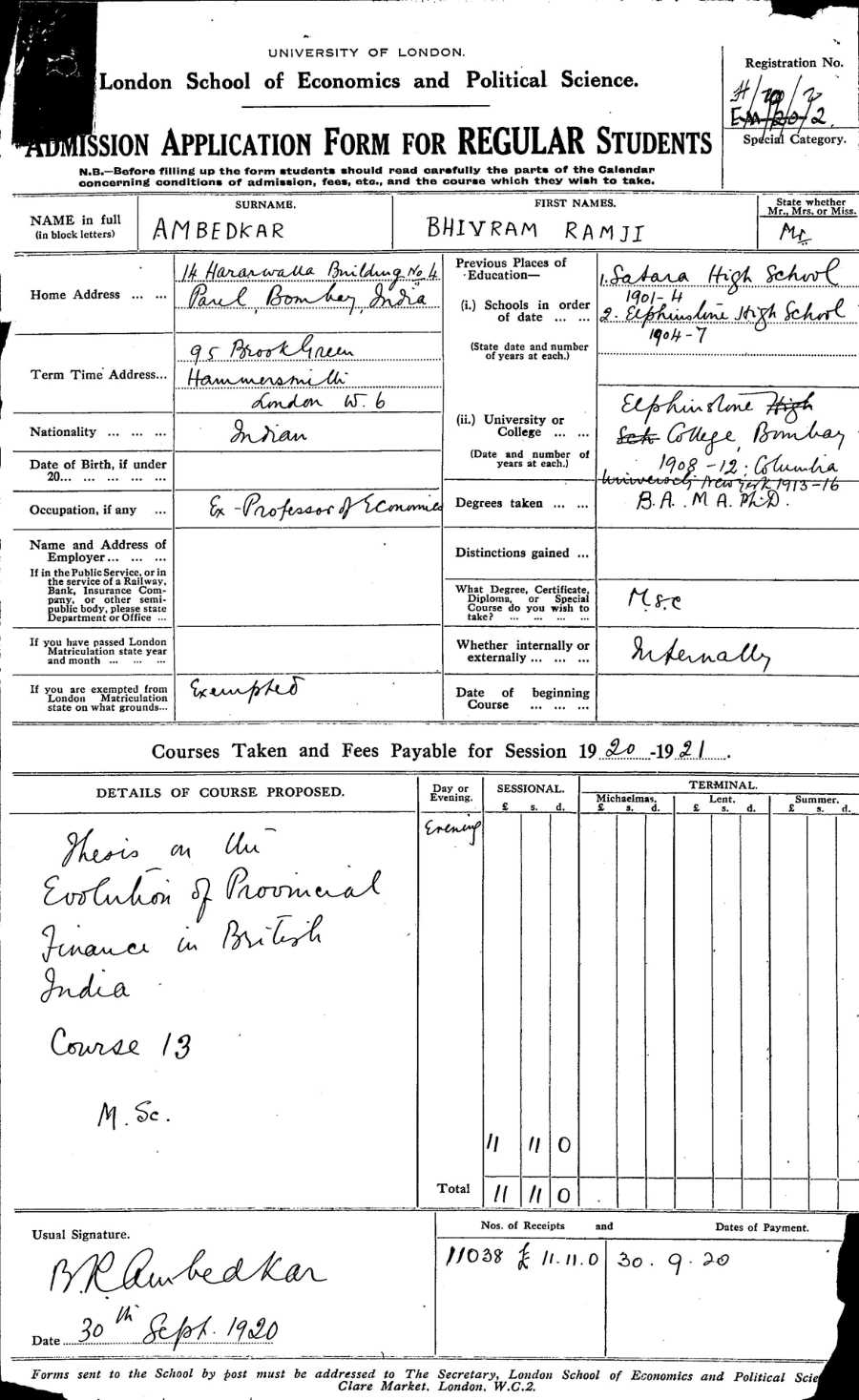
1920 Ambedkar application form, LSE student file
Like any student file, they serve as a record of the interactions between students and the institution. Ambedkar was no stranger to dealing with university administration, and his student file shows a number of times where the incorrect form had been filled in, or the incorrect information provided.
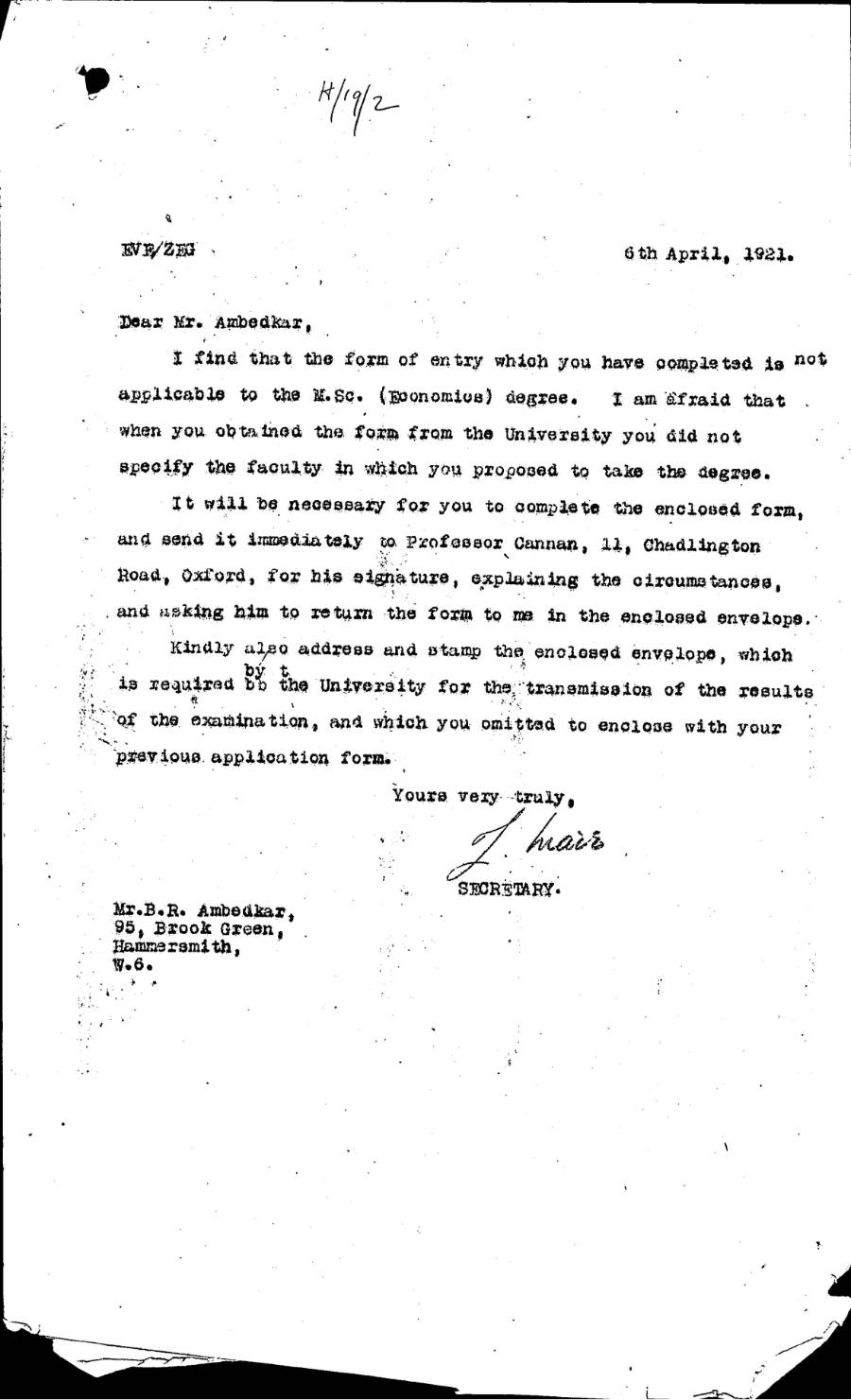
Letter from School Secretary to Ambedkar, LSE student file
Ambedkar replies promptly:
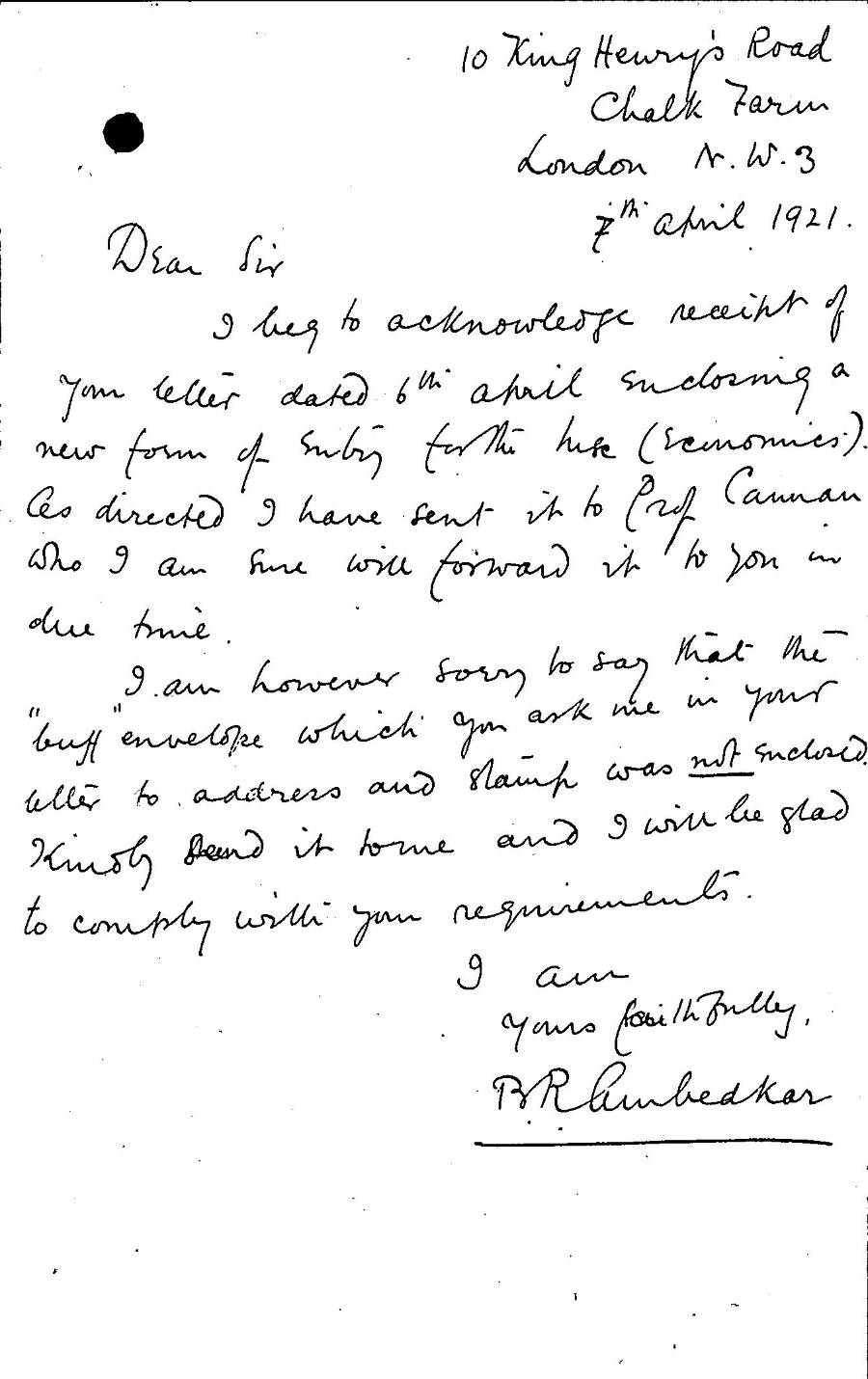
Ambedkar’s reply to school secretary, 1921, LSE student file
During Ambedkar’s second period as a student at LSE he lived at 10 King Henry’s Road in Primrose Hill and would study at LSE, the British Museum, and make use of London’s various facilities to conduct his research. During this time he studied constantly and ate frugally to save money.
To save both money and time he did not take his lunch. He had then taken his lodgings at a semi-boarding house….The keeper of the boarding-house was a harsh and terrible lady. The breakfast she offered her boarders consisted of a piece of fish, a cup of tea, a piece of bread with a sprinkling of jam….tremendous laborious day-time work was followed by an evening walk in open air for about half an hour and then dinner at the house of the same lady. It consisted of a cup of Bovril to be relished with some biscuits and a little butter
Keer biography, p45
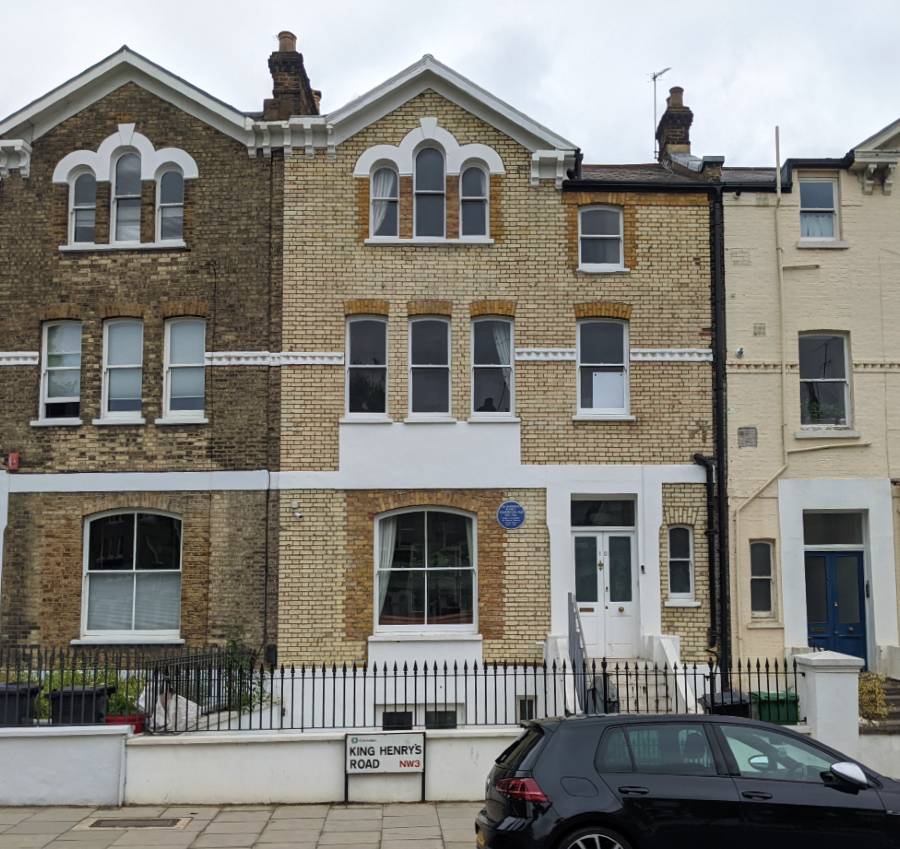 Photograph of Ambedkar House, taken 19 June 2021
Photograph of Ambedkar House, taken 19 June 2021
The house that Ambedkar lived in was purchased by the Government of Maharashtra in August 2015 and was converted into a museum commemorating Ambedkar’s life and legacy. The conversion was subject to an enforcement notice by Camden Council, although this was eventually overruled by the UK Government via the Planning Inspectorate, allowing the building to continue life as a museum. You can read the outcome of the inquiry here and visit this important museum. The inquiry included two letters from academics of the LSE community who stressed the importance of Ambedkar.
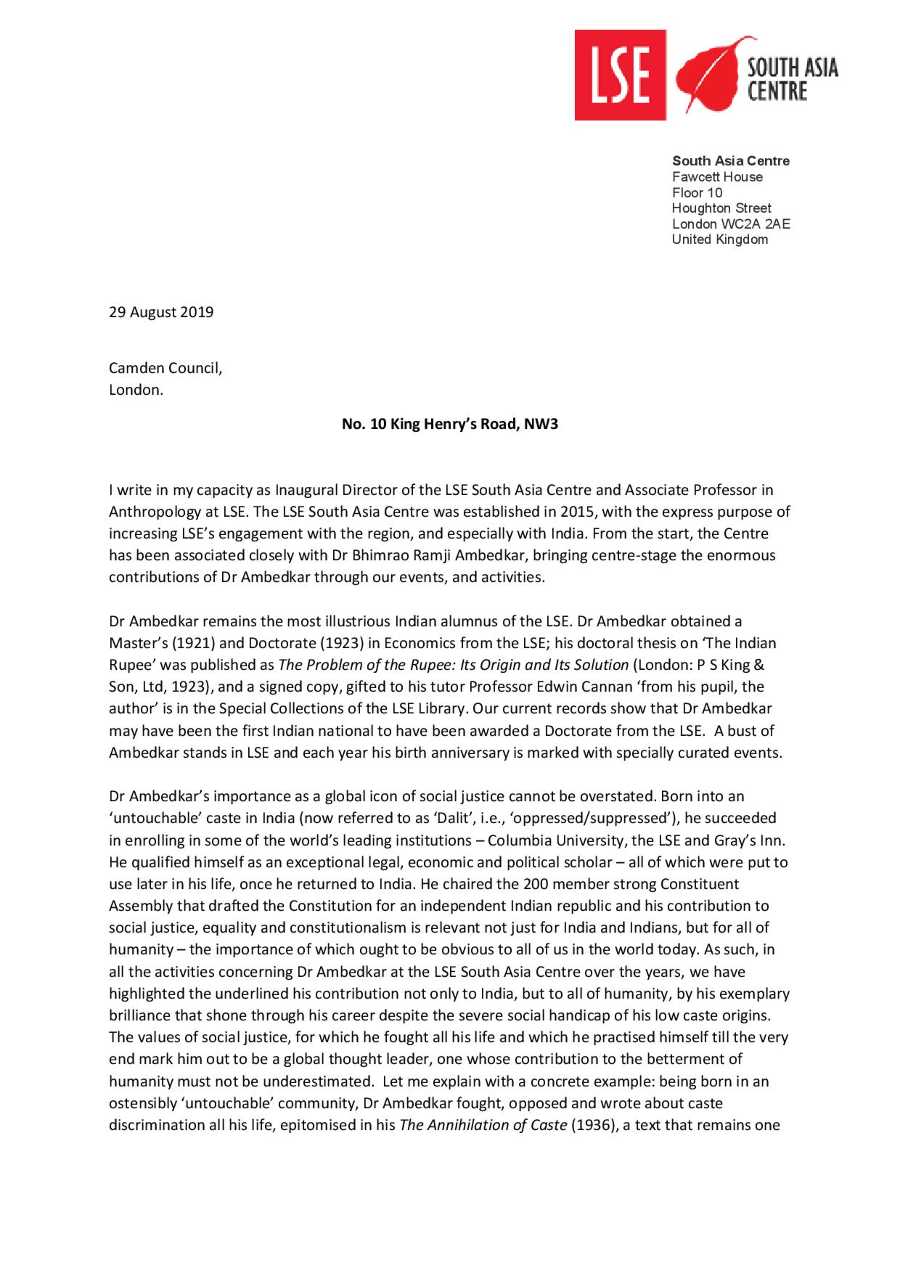
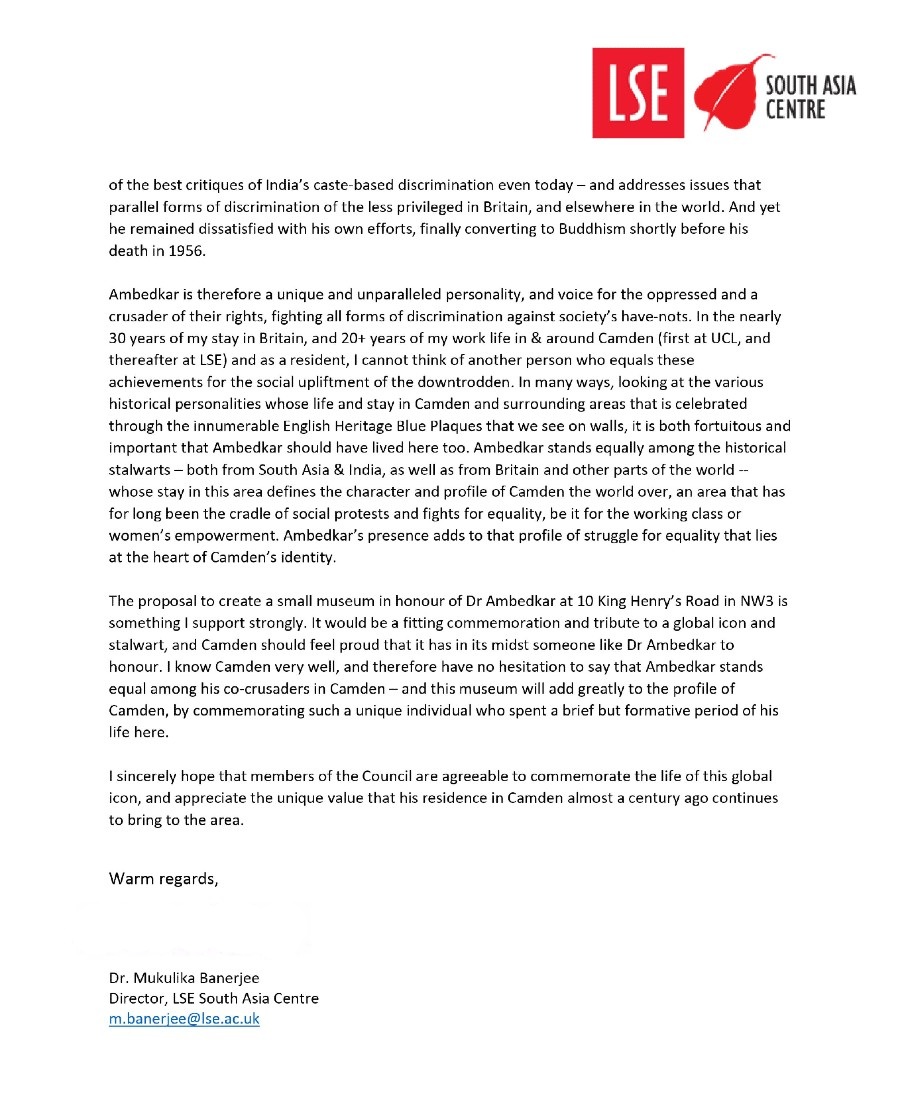
Letter from Dr Mukulika Banerjee, (LSE Anthropology), 2019
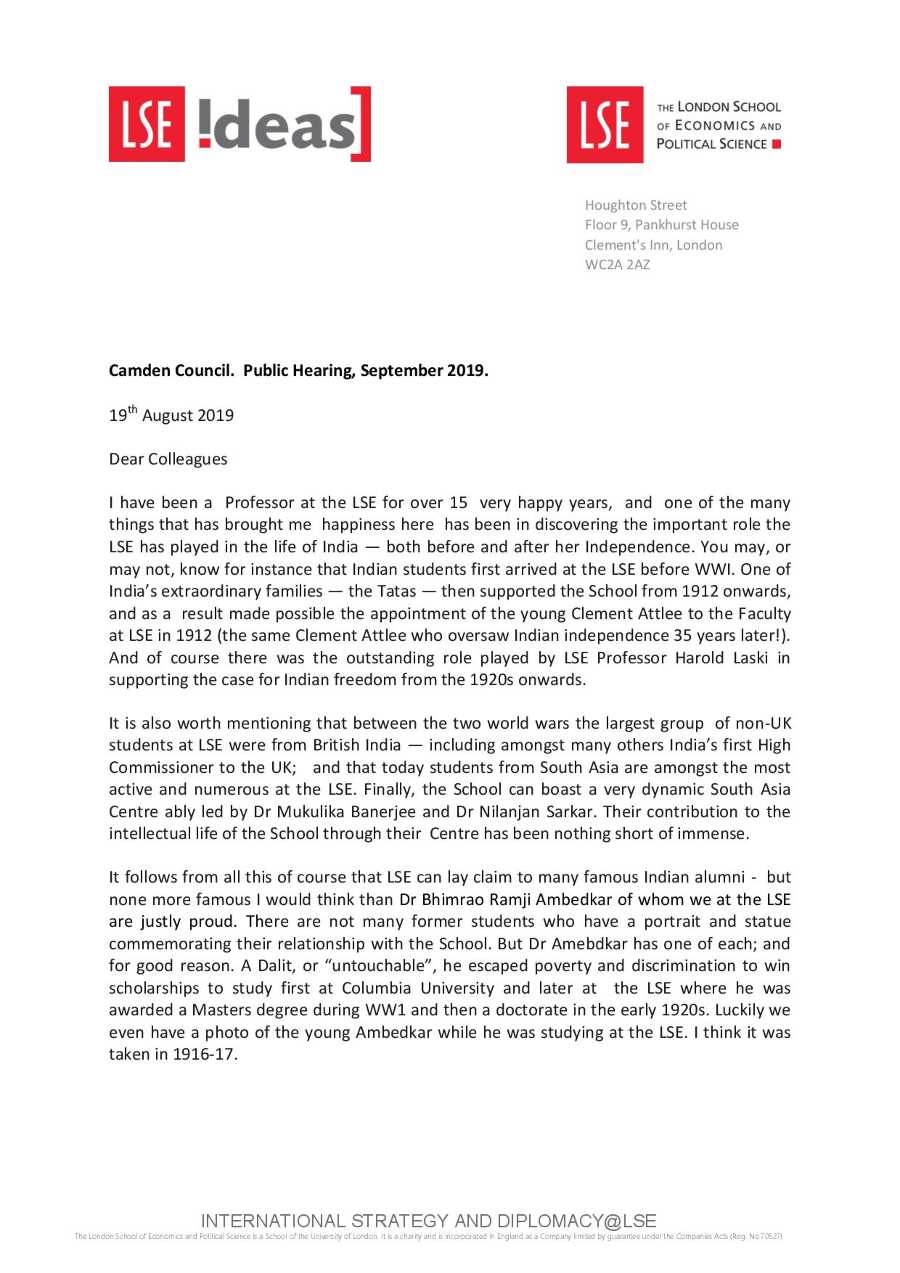
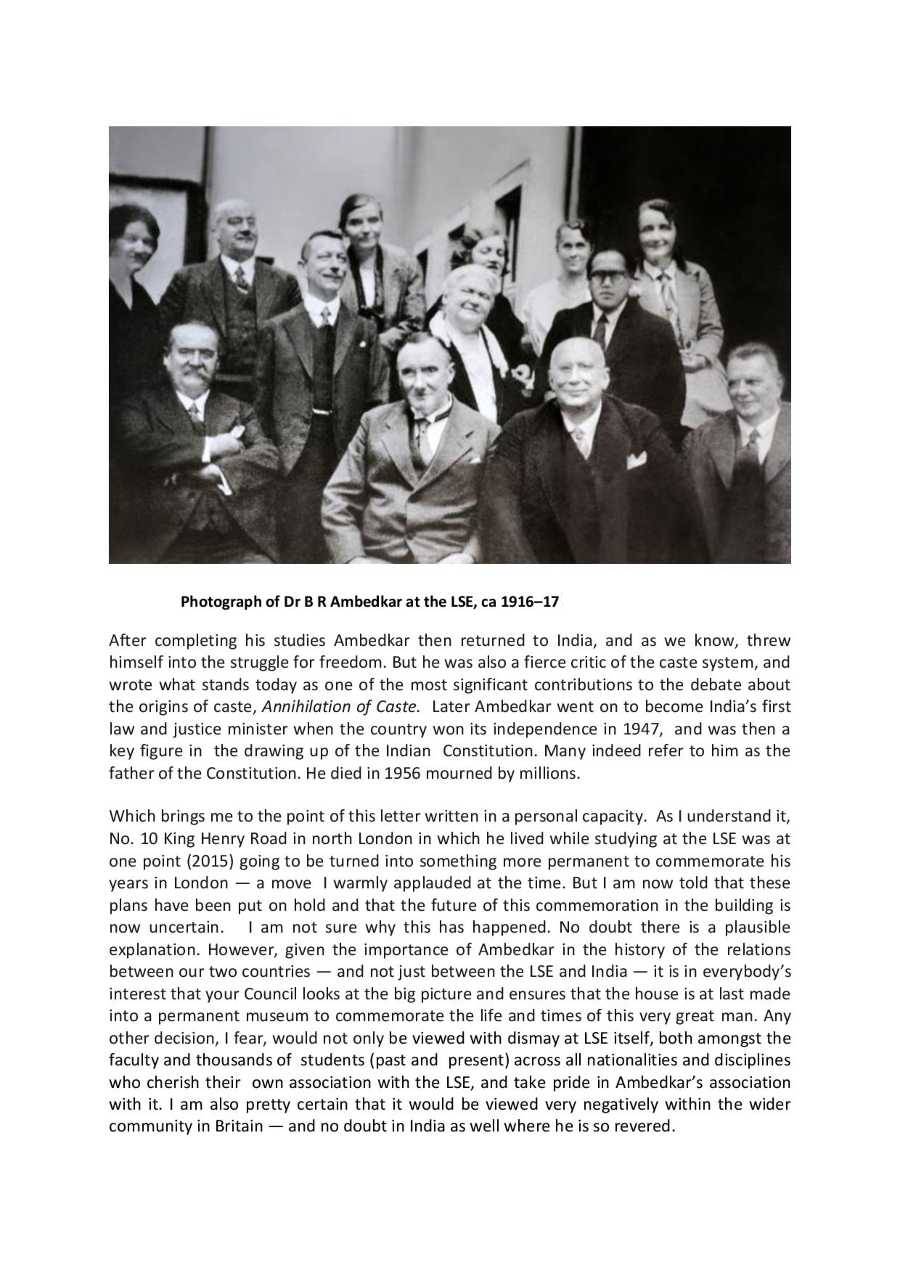
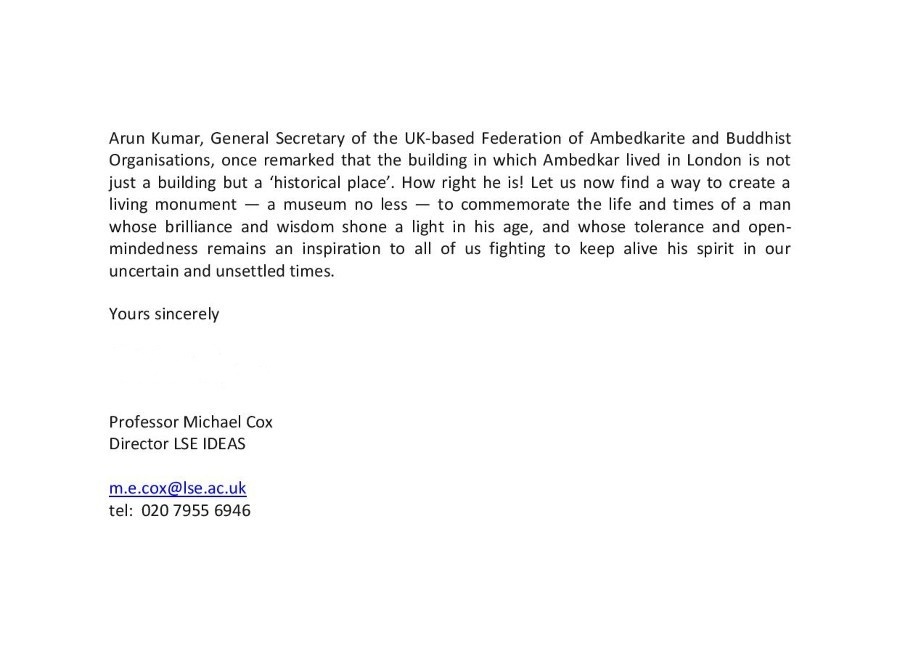 Letter from Professor Michael Cox, (LSE Ideas), 2019
Letter from Professor Michael Cox, (LSE Ideas), 2019
An annual walk from Ambedkar House to LSE commemorates the walk that Ambedkar would have taken to get to LSE, and then on to the High Commission of India.
Ambedkar eventually completed his famous dissertation The Problem of the Rupee, dedicating it to his supervisor Edwin Cannan, Professor of Political Economy. His thesis was later influential in the setting up of the Reserve Bank of India, and Ambedkar is believed to be the first Indian to receive a doctorate from the LSE.
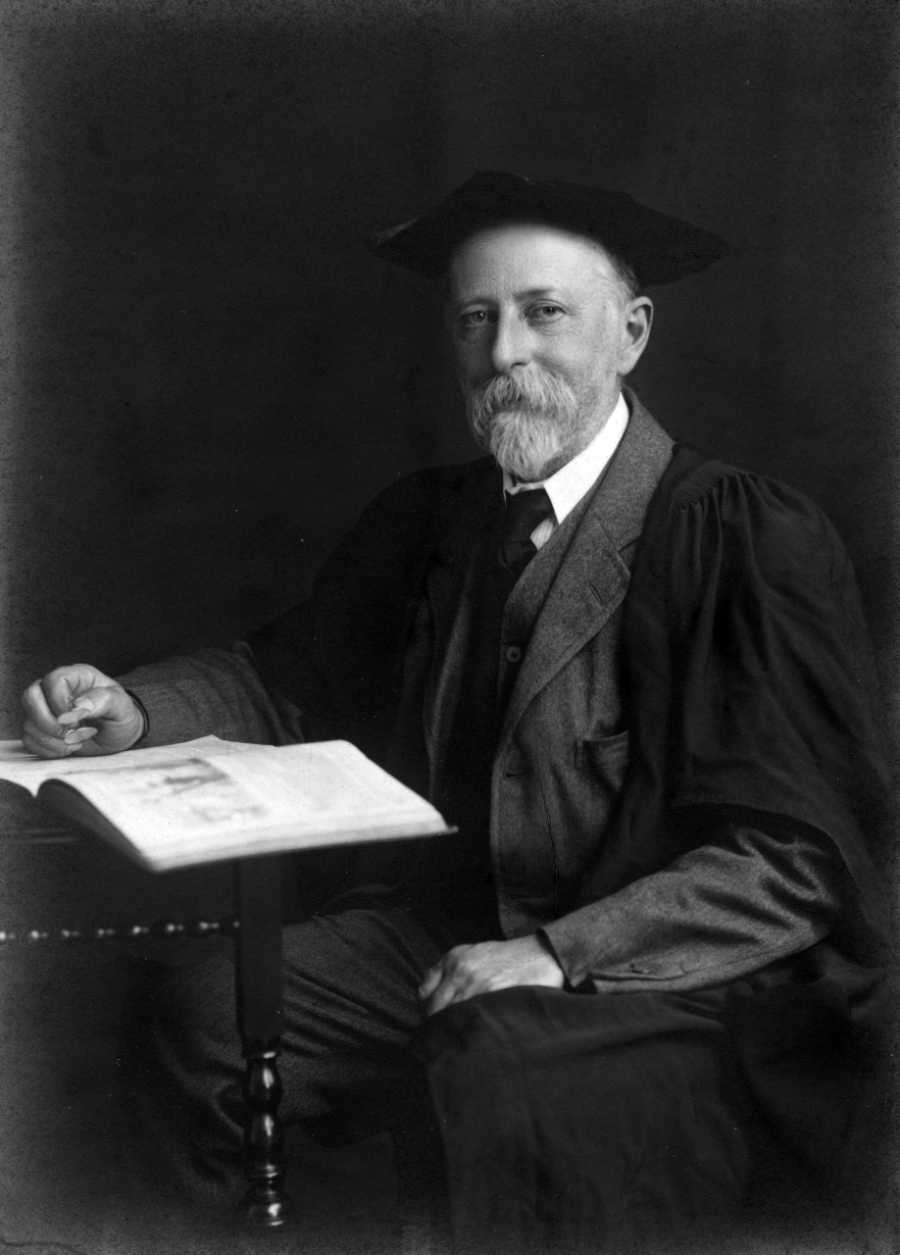
Professor Edwin Cannan, c1920
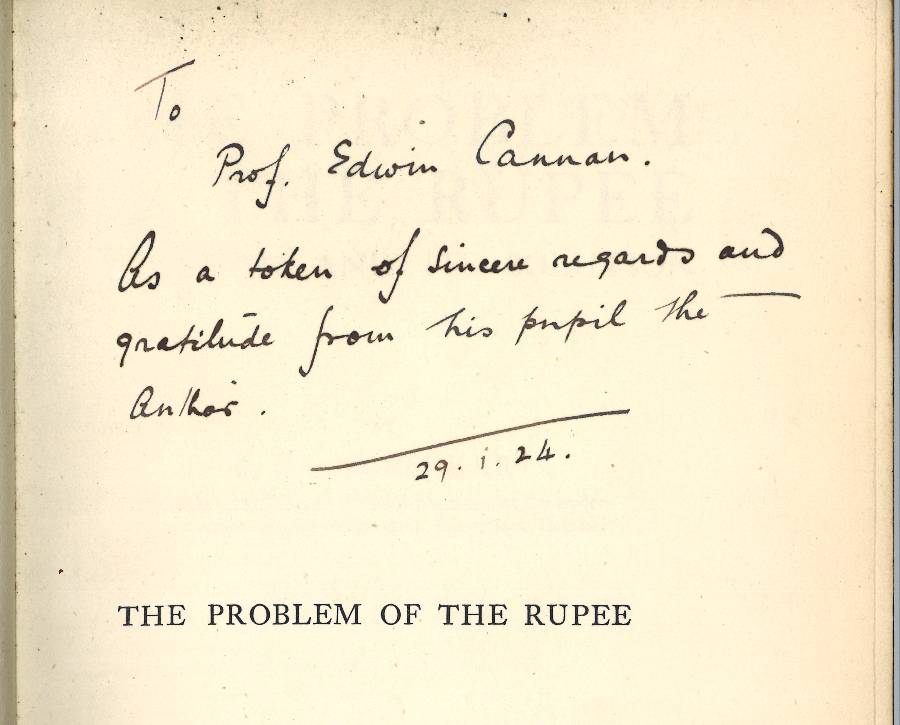 Ambedkar’s signed dedication to his supervisor, 1924, LSE Library CANNAN/717
Ambedkar’s signed dedication to his supervisor, 1924, LSE Library CANNAN/717
It seems that Ambedkar’s thesis was not initially accepted in its original form. At the time there is nothing in the student file that documents the reasons as to why he did not initially pass (and it is quite common for candidates to have to make small changes to their dissertation). Subsequent notes in his student file many years later (from the Secretary and also School Librarian in 1958 and 1979 respectively) believe that Ambedkar was asked to revise his “highly controversial” thesis for expressing “anti British political views”, although the original source for these claims cannot be found.
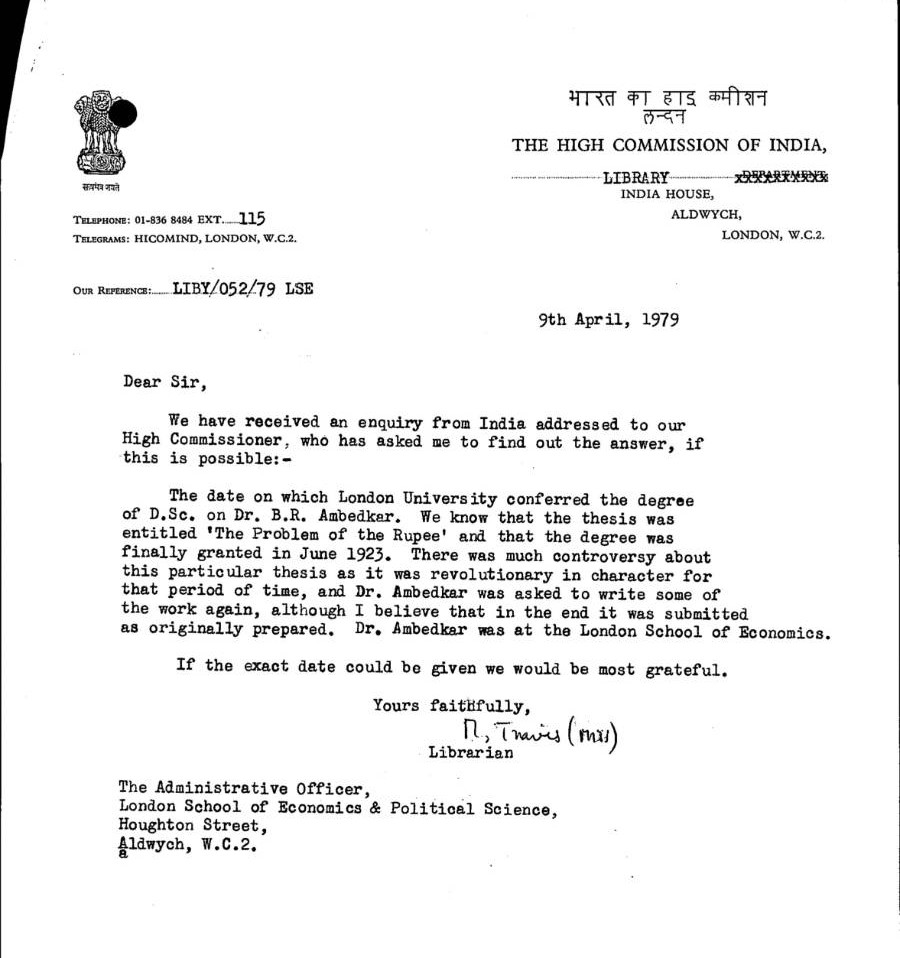 Letter from the High Commission, 1979, LSE student file
Letter from the High Commission, 1979, LSE student file
LSE maintained a register at that time of students who had graduated from their courses. Ambedkar’s entry can be seen here:
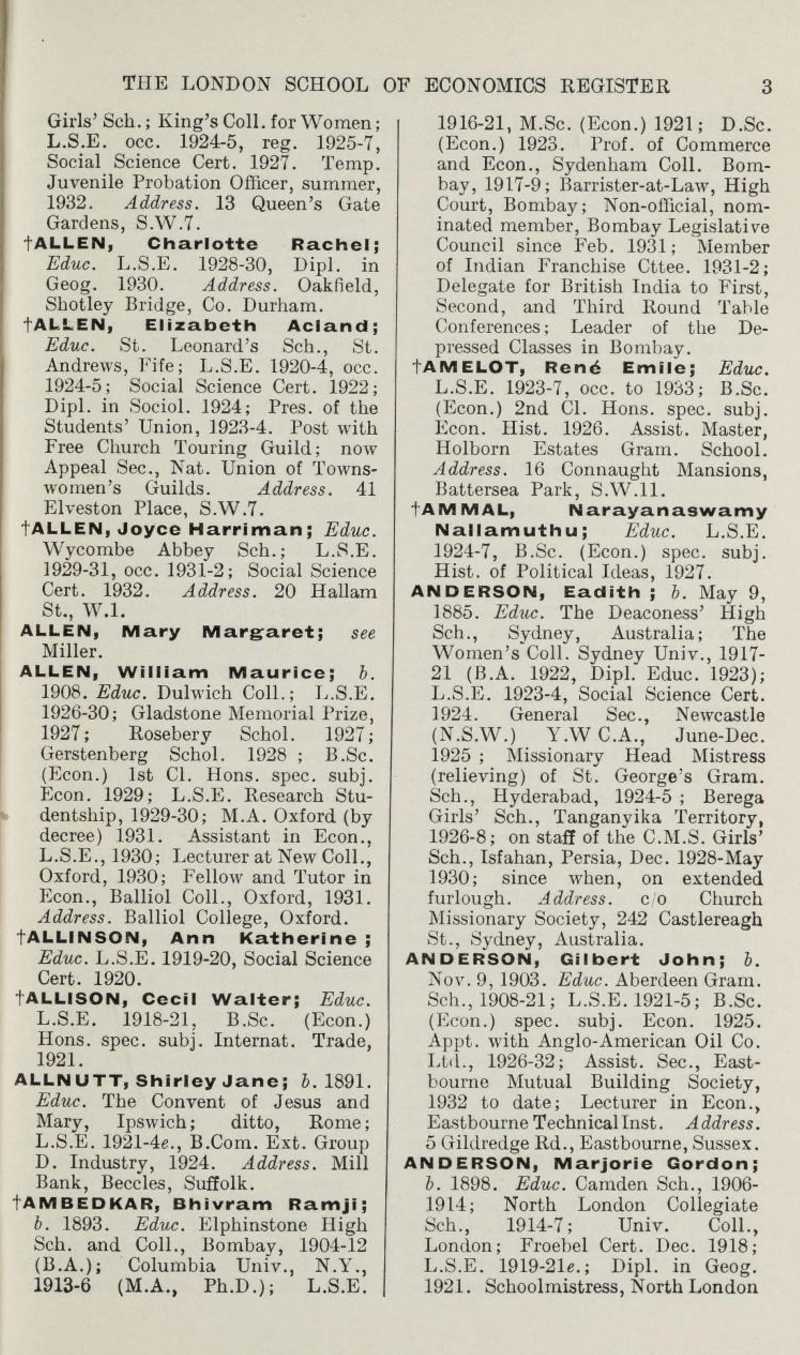
LSE Register of Students, 1895 – 1919. Download
After receiving his doctorate and being called to the bar at Gray’s Inn, Ambedkar moved back to India and initially practiced as a barrister. He became increasingly involved in campaigning for social reform. He spoke at conferences, petitioned for political rights, and helped organise Dalit communities. Among many of his activities was the founding of the Bahishkrit Hitakarini Sabha (‘Group for the Wellbeing of the Excluded’) whose motto frames this exhibition: “Educate, Organise, Agitate”.
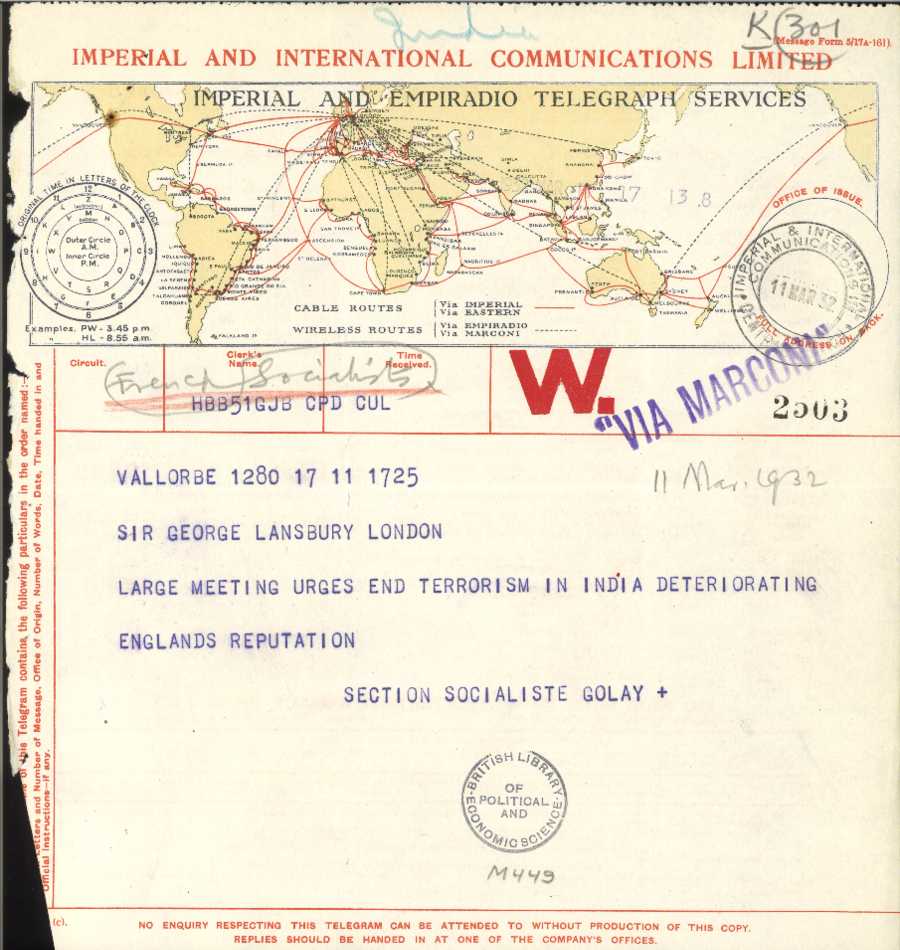 Telegram sent to George Lansbury, 1932, LSE Library LANSBURY/23
Telegram sent to George Lansbury, 1932, LSE Library LANSBURY/23
His work in campaigning for the rights of Dalit communities was also bound up in the movements towards independence in India. The above image shows telegrams sent to George Lansbury, then leader of the Labour Party in the early 1930s. At this time, Ambedkar returned to London and gave evidence at the Round Table Conference (a series of talks to discuss the constitutional future of India). He was invited there as one of two representatives of the “Depressed Classes” (a term used to describe Dalit communities).
Ambedkar was in touch with Lansbury and sent him the following letter enclosing a statement which criticizes the Joint Parliamentary Committee’s report on the Indian Constitution and urges Lansbury to come “to the rescue” of the depresses classes, who were dissatisfied with the report.
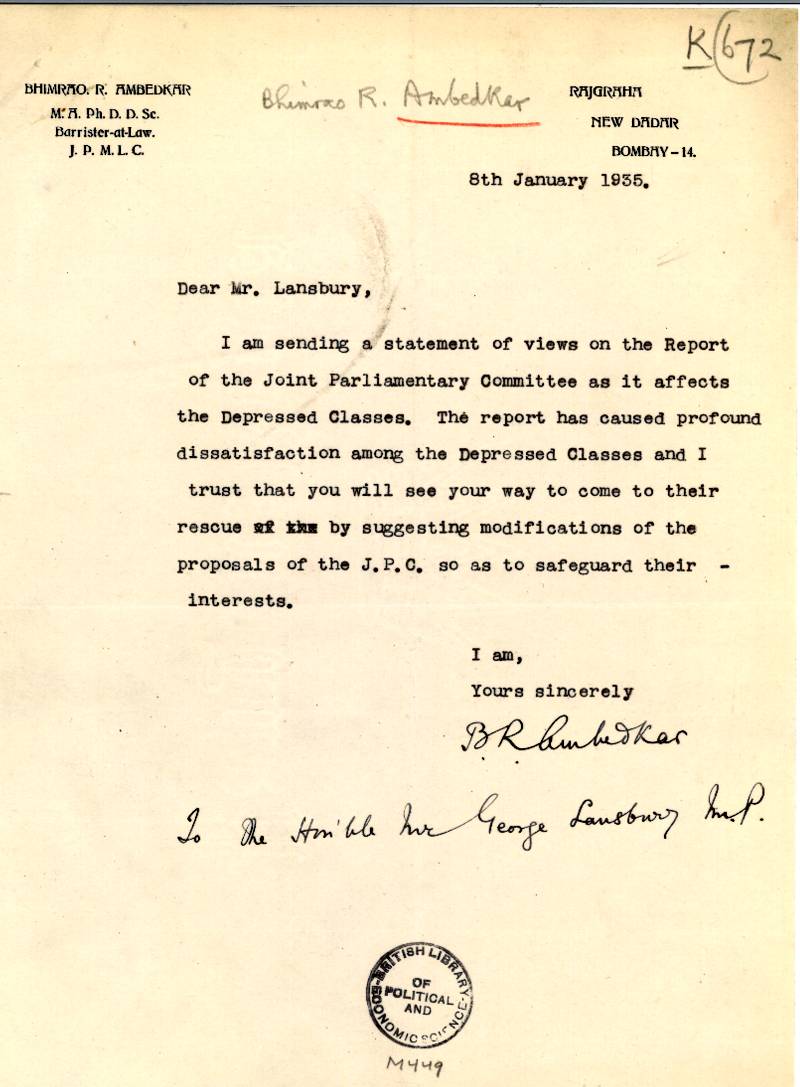 Letter from Ambedkar to Lansbury, 1935, LSE Library LANSBURY/23
Letter from Ambedkar to Lansbury, 1935, LSE Library LANSBURY/23
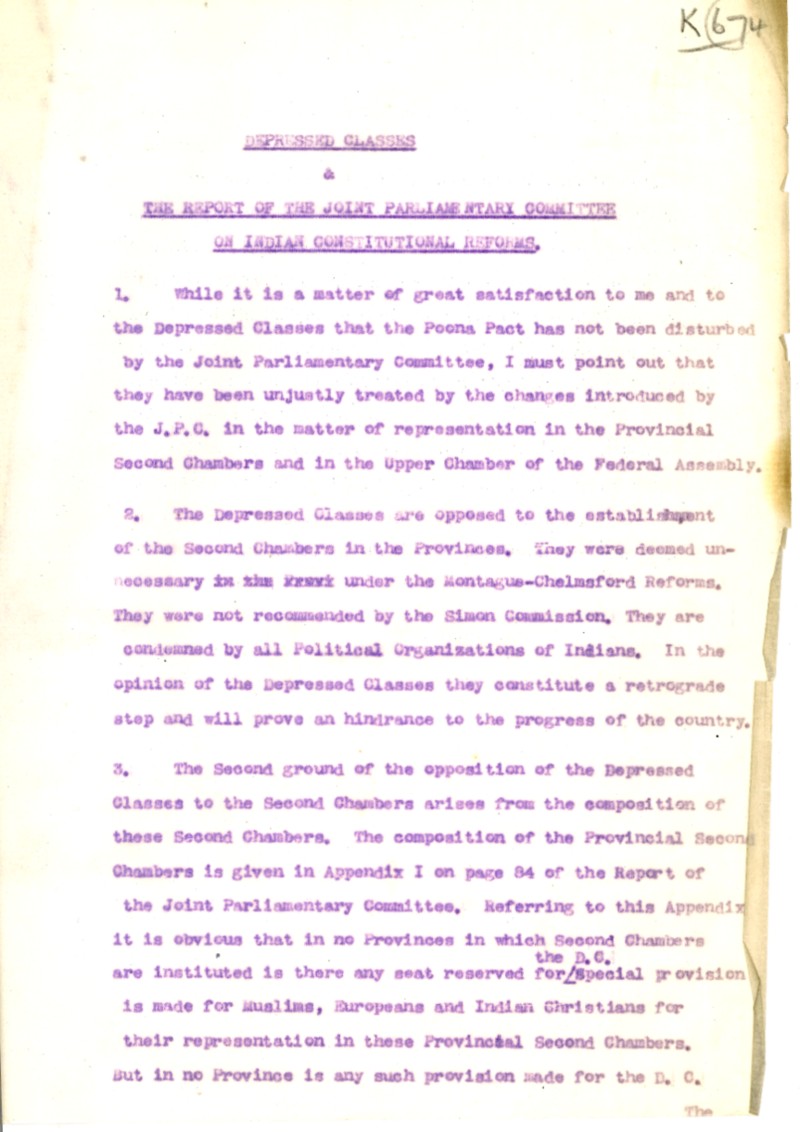 Ambedkar’s statement on the Depressed Classes, LSE Library LANSBURY/24
Ambedkar’s statement on the Depressed Classes, LSE Library LANSBURY/24
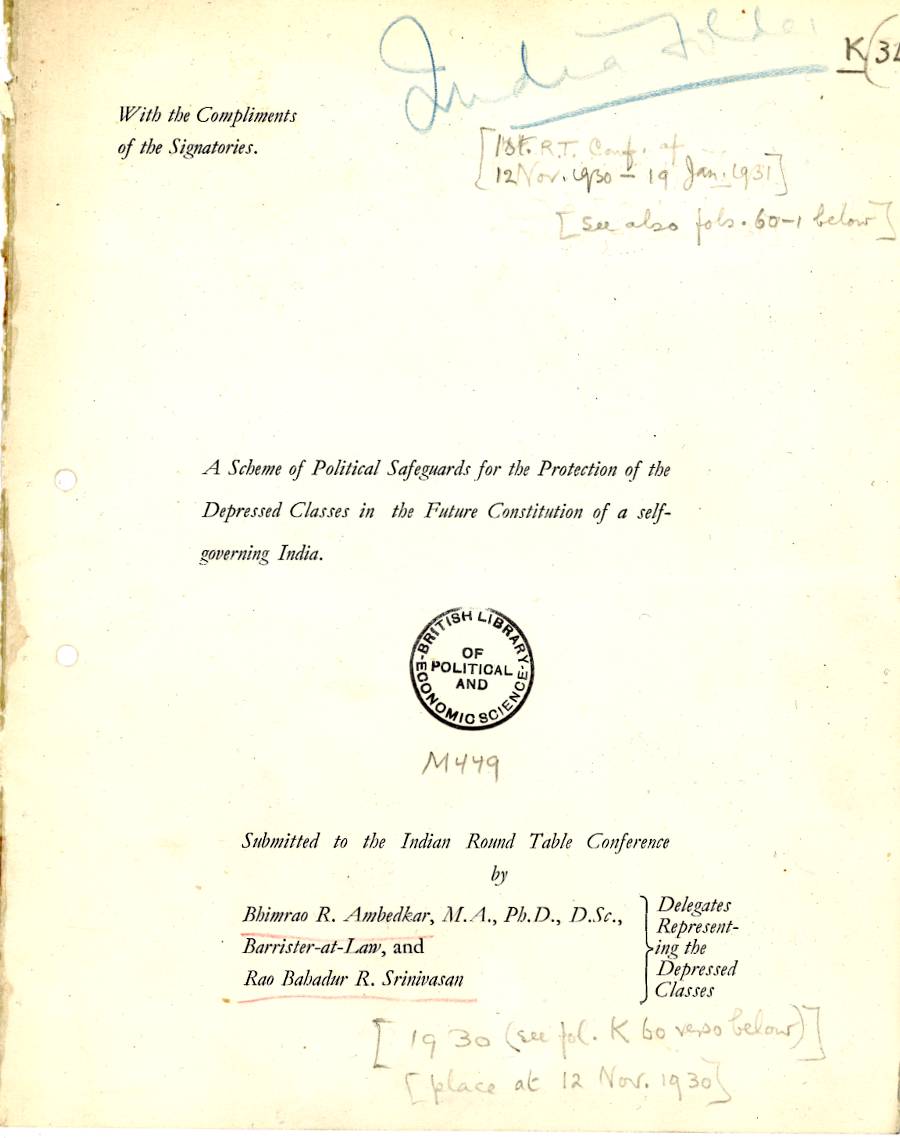 Download Ambedkar’s “A scheme of Political Safeguards for the Protection of the Depressed Classess in the Future Constitution of a self-governing India" , LSE Library LANSBURY/22
Download Ambedkar’s “A scheme of Political Safeguards for the Protection of the Depressed Classess in the Future Constitution of a self-governing India" , LSE Library LANSBURY/22
The archives of George Lansbury are an interesting source for material on Indian independence movements in the 1930s, as many people in India contacted the Labour leader to provide information on what was going on in India at the time. Here is a letter from Mirabehn (Madeline Slade), a British activist who moved to India and became a disciple of Gandhi. She supported civil disobedience and calls on Indians to “not touch a single thing which supports this British Raj”. Read more about Mirabehn.
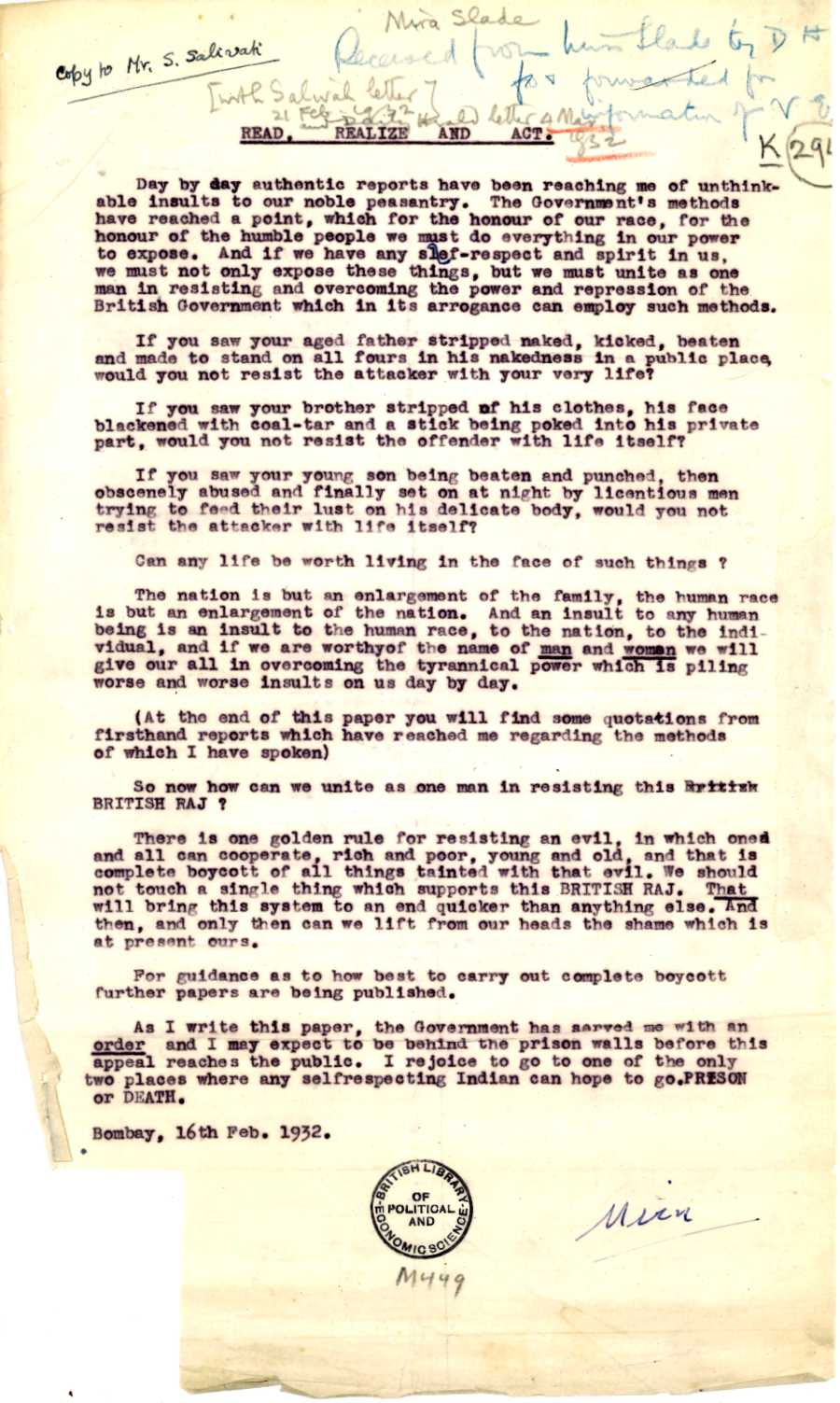
“Read, Realise, Act” letter from Mirabehn, LSE Library LANSBURY/23
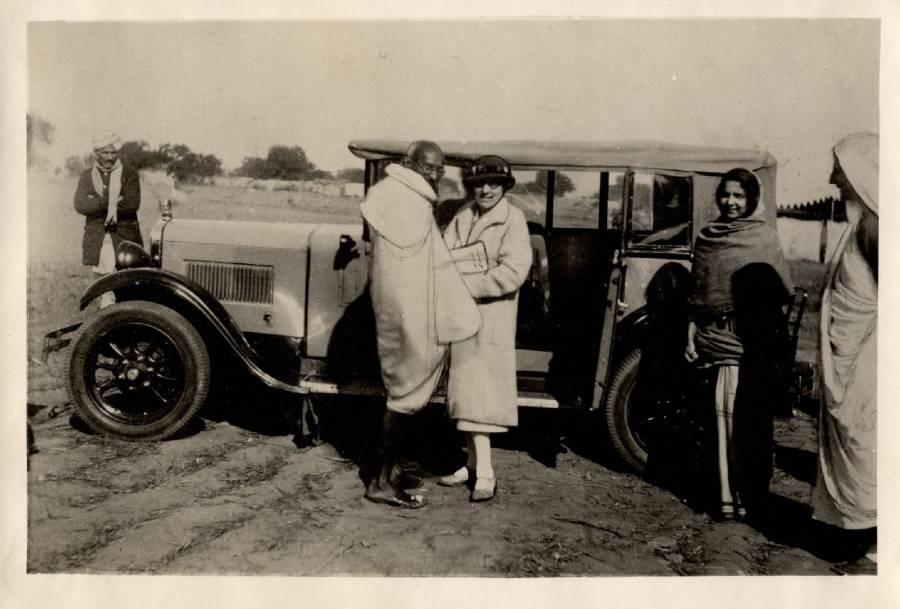
(From left): Mahatma Gandhi, Agnes Maude Royden, Aruna Asaf Ali, Mirabehn, c.1934, 7AMR/3/01/06, Women’s Library at LSE
It seems likely that during his time at the Roundtable talks Ambedkar revisited some of his colleagues at LSE. His student file shows a letter from his former supervisor Edwin Cannan who writes to William Beveridge (then Director of the LSE) to encourage him to entertain Ambedkar whilst he is here. Cannan recalls above his former student Ambedkar: “I always said he was by far the ablest Indian we ever had in my time”.
The text in this letter expresses derogatory stereotypes of Indian people as servile.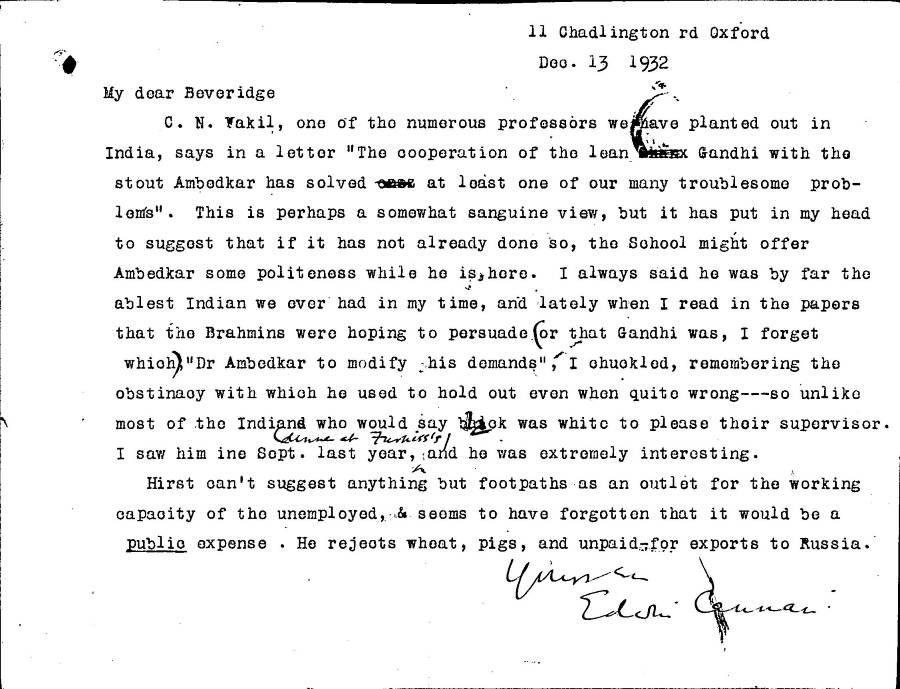 A letter from Cannan to Beveridge, 1932
A letter from Cannan to Beveridge, 1932
In this letter, Cannan refers to the conflict between Ambedkar and Gandhi. Ambedkar eventually felt that the only way out of the oppression that Dalits faced was to “annihilate” the caste system entirely, and believed in separate electorates for minorities (including Dalits). Gandhi felt instead that reform of the caste system was needed, and was against splitting the Hindu vote. You can read more about their disagreements in Ambedkar’s highly influential and famous text The Annihilation of Caste.
Gandhi and Ambedkar also disagreed over what word to use to describe people from the caste to which Ambedkar belonged, with Gandhi favouring “Harijan” (“children of God”).
The term “dalit” was originally used by Jyothiba Phule, and was then repopularised in the 1970s as a political identity through the Dalit panther movement and other political and cultural movements. ”Dalit” means “broken” or “crushed”.
In the letter above, Cannan responds to the suggestion that Ambedkar should back down on the conflict with Gandhi, recalling of his former student: “I chuckled, remembering the obstinacy with which he used to hold out even when quite wrong”.
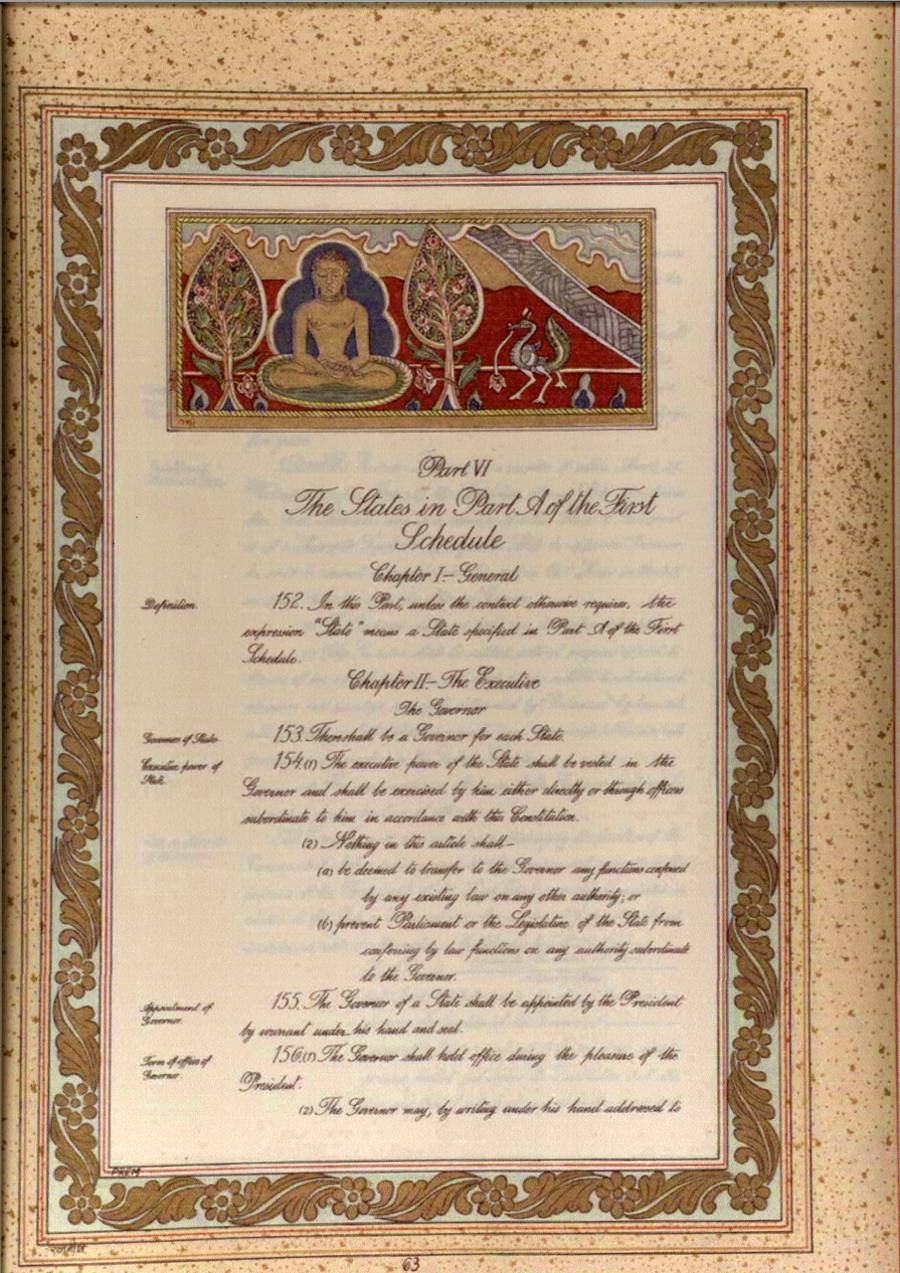 Opening page of ‘Part VI: The States in Part A of the First Schedule’, Constitution of India, Photolithographed at the Offices of the Survey of India, Dehra Dun, India, 1950. Handwritten by calligraphist Mr Prem Bihari Narain Raizada, with accompanying artwork, representing India’s religious cosmopolitanism, by artist Mr Nandalal Bose
Opening page of ‘Part VI: The States in Part A of the First Schedule’, Constitution of India, Photolithographed at the Offices of the Survey of India, Dehra Dun, India, 1950. Handwritten by calligraphist Mr Prem Bihari Narain Raizada, with accompanying artwork, representing India’s religious cosmopolitanism, by artist Mr Nandalal Bose
Ambedkar would later become Chair of the Drafting Committee that authored India’s constitution. Ambedkar played a significant role in many aspects of the constitution including preamble, constitutional morality, nature of Indian federalism, abolition of untouchability, emphasizing political, social and economic justice simultaneously, affirmative action, minority rights and reservation in jobs, electorates and educational institutions for the scheduled caste and tribes, outlawing forced labor and antidiscrimination provisions among others. The constitution of India is the defining document of independent India and outlines the roles, rules and regulations that comprise the government structure in India, the relationship between its many parts, and the rights and duties of its citizens. It came into effect on 26 January 1950, which is celebrated as Republic Day.
Download the original constitution, digitised by the Rare Book Society of India, here.
Listen to LSE students reciting the preamble to India’s Constitution.
In his later years, Ambedkar resigned from political life, increasingly disappointed by Nehru and Congress. Battling illness with diabetes, Ambedkar wrote a number of articles on Buddhism and believed that conversion out of Hinduism was the only way for Dalit communities to gain equality. In a famous text he wrote some 20 years earlier, Ambedkar reminds his audience of the atrocities that Dalits face, and likens the “problem of untouchability” as a matter of class struggle:
The Untouchables are beaten for putting on clothes of superior quality. They are whipped because they used utensils made of metal like copper, etc. Their houses are burnt for having purchased land for cultivation. They are beaten for putting on the sacred thread on their body. They are beaten for refusing to carry away dead animals and eat the carrion, or for walking through the village road with socks and shoes on, or for not bowing down before a caste Hindu, or for taking water in a copper pot while going out in the field to ease [=defecate]. Recently, an instance has been noticed where the Untouchables were beaten for serving chapatis at a dinner party.
Speech delivered by Ambedkar in 1936
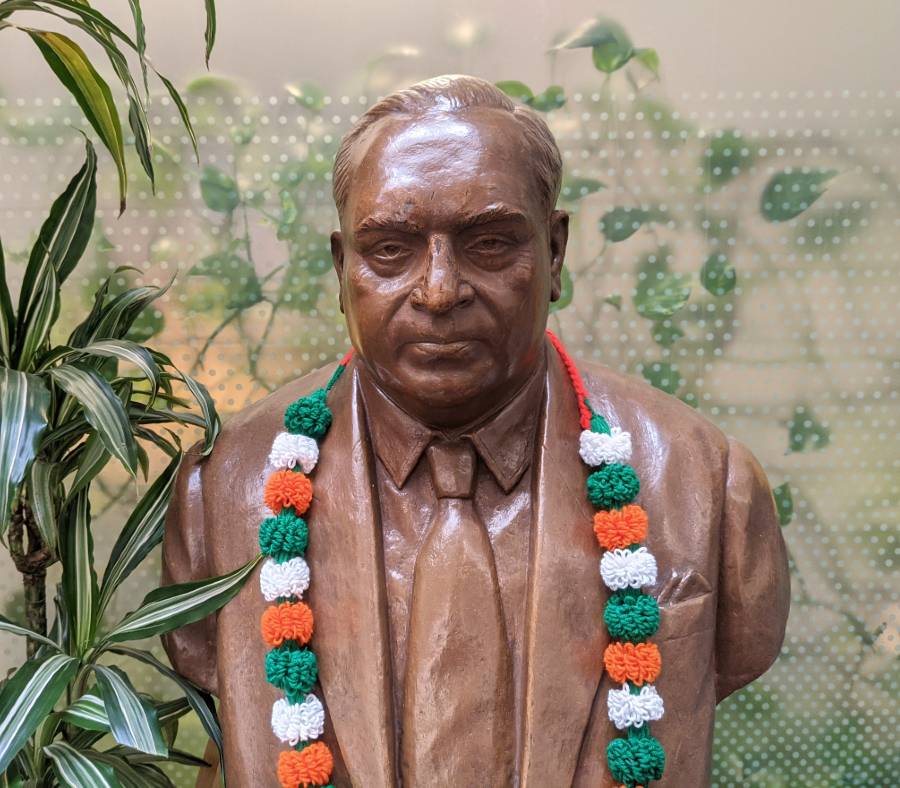 On 14 October 1956 Ambedkar converted to Buddhism shortly before his death in a mass ceremony at Nagpur, with many thousands of Dalits converting with him. This magnificent bust of Ambedkar was donated to the School by FABO, the Federation of Ambedkarite and Buddhist Organisations UK. The School was also gifted a portrait in 1973, that you can read more about in the student file, and also in this LSE History blog post.
On 14 October 1956 Ambedkar converted to Buddhism shortly before his death in a mass ceremony at Nagpur, with many thousands of Dalits converting with him. This magnificent bust of Ambedkar was donated to the School by FABO, the Federation of Ambedkarite and Buddhist Organisations UK. The School was also gifted a portrait in 1973, that you can read more about in the student file, and also in this LSE History blog post.
 Presentation of Portrait of Ambedkar, 1973 (left to right: Professor Arthur John (Pro Director), Mr D. A. Clarke (Librarian), Mr M. Rasgotra (Acting High Commissioner for India), Sir Walter Adams, Ven Dr H. Saddatissa (Head of London Buddha Vihara)
Presentation of Portrait of Ambedkar, 1973 (left to right: Professor Arthur John (Pro Director), Mr D. A. Clarke (Librarian), Mr M. Rasgotra (Acting High Commissioner for India), Sir Walter Adams, Ven Dr H. Saddatissa (Head of London Buddha Vihara)
Along with a record of the presentation of the portrait and the speech that LSE Director I. G. Patel gave to receive it, Ambedkar’s student file ends with newspaper clippings reporting his death.
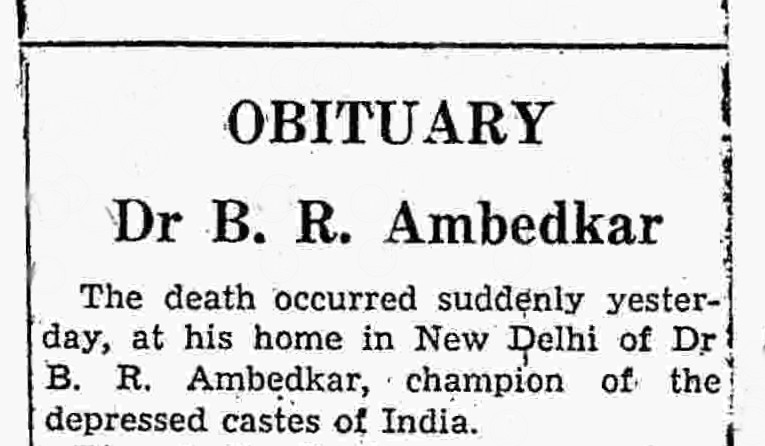
Newspaper clipping of obituary announcing Ambedkar’s death, LSE student file
Watch our launch event on Ambedkar, caste, constitution, and gender
Watch our launch event from 30 June 2021; a roundtable discussion on caste, constitution, and gender, inspired by the life and legacy of Ambedkar. Speakers include Dr. Nilanjan Sarkar (LSE South Asia Centre), Dr. Jayaraj Sundaresan (LSE Geography), Dr. Rohit De (Yale University), Dr Shailaja D Palik (University of Cincinnati), and Dr. Suraj Yengde (Harvard Kennedy School).
The speakers refer to some books and articles during this discussion. These are:
LSE Ambedkar resources
- Download the whole of Ambedkar’s LSE student file. The documents in this file are in copyright and for your own private research use. Please get in touch for further information.
- Follow the activities of the DecolonisingLSE Collective, which has archived public talks on caste, anti-caste law in UK, Periyar, and more to come. You can also follow them on Twitter, and get involved in an Ambedkar Reading Group.
- Follow the activities of the LSE South Asia Centre -. Listen to LSE students reciting the Premable to India’s constitution, read about the activities and work of their 2015 Ambedkar Research Scholars, and read about their 2017 exhibition “Law and Nationhood: India at 70”.
- Follow LSE History’s blog posts on Ambedkar, including Manmit Bhambra, who talks about Ambedkar as a personal inspiration in their work at LSE.
- Listen to a podcast from a previous exhibition that looks at independence in India, Pakistan and Bangladesh, featuring a segment on Ambedkar.
- Search and read previous PhD theses and research published on LSE’s open access repositories LSE Theses Online and LSE Research Online, including for example a PhD thesis on everyday life and caste in rural Chhattisgarh, and a thesis exploring caste-based discrimination in the Himalayan foothills of East Nepal.
Columbia University also have a detailed timeline of Ambedkar’s life with many of his texts transcribed.
The quotes used in this exhibition come from Dhananjay Keer’s Dr. Ambedkar: Life and Mission (India: 1962).
Help us grow this living exhibition
We want this to be a space to celebrate the life and legacy of Ambedkar and his continued impact on the LSE community. We will be looking to add more content and we will be getting in touch with the LSE community soon – so watch this space!
Fill out our exhibition survey
Your feedback is important as it helps ensure that more exhibitions like this can happen.
Fill out our survey
If you are the author, rights holder or are authorised to act on behalf of the author/rights holder and you are concerned that you have found material available on our website for which you have not given permission and which infringes your copyright, you have the right to request its removal.
Please contact us stating the following:
- Your contact details: this should include your full name, title if acting on behalf of an organisation, telephone number, email and postal address.
- The name and/or a description of the work/s.
- The exact and full URL where you found the material.
- Proof that you are the rights holder or are an authorised representative.
Upon receipt of a request to take down one or more pieces of work from its website, LSE Library will suspend as soon as is practicable publication of the material in question while an investigation is carried out. A staff Review Panel will investigate the query and will usually convey its decision within 4 weeks. If the case is complex, and additional time is needed, we will write to let the Requestor know.
Contact details
Email: library.enquiries@lse.ac.uk
Post: LSE Library, 10 Portugal Street, London WC2A 2HD
Please send any queries for the attention of the Copyright Officer.